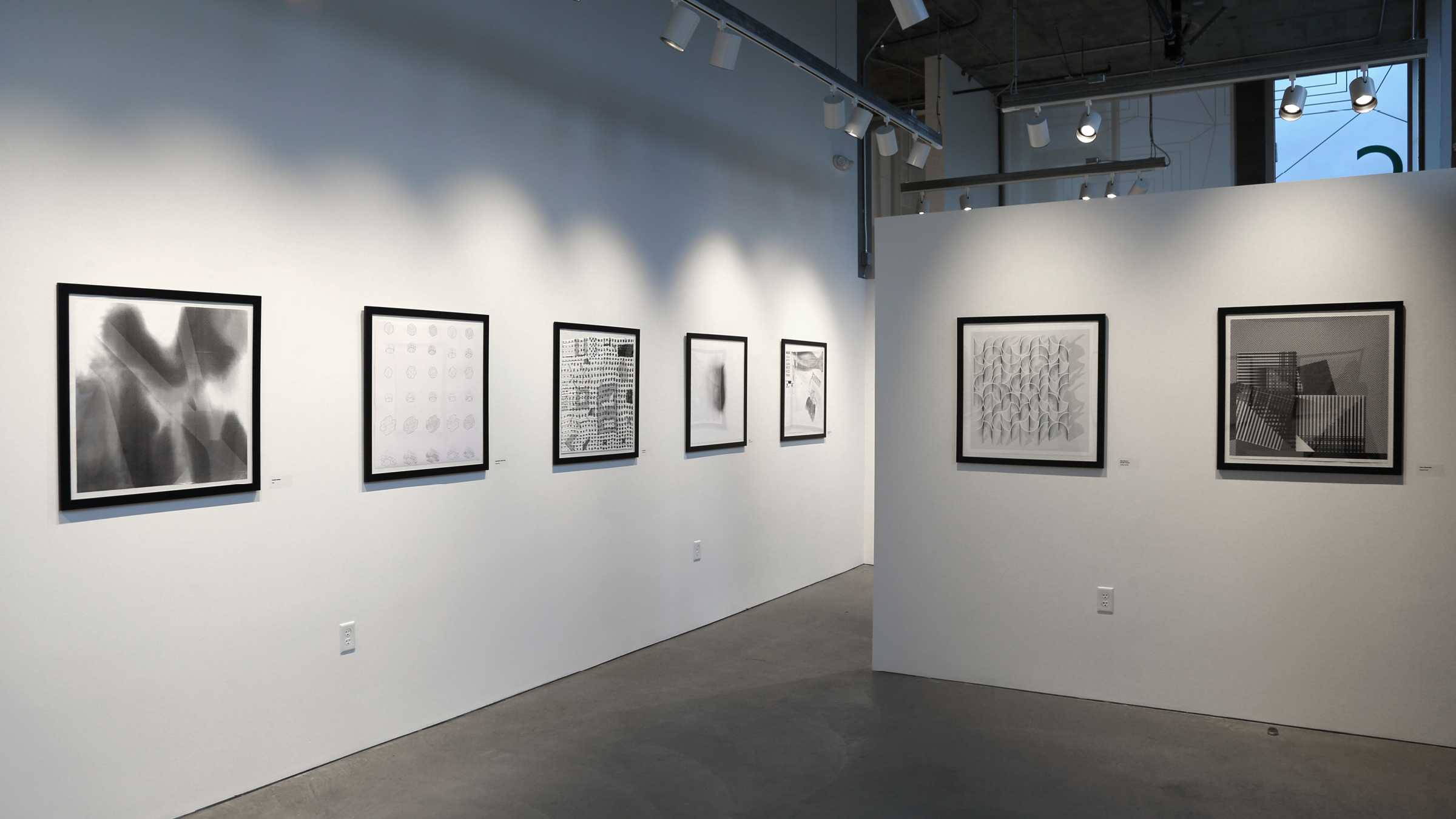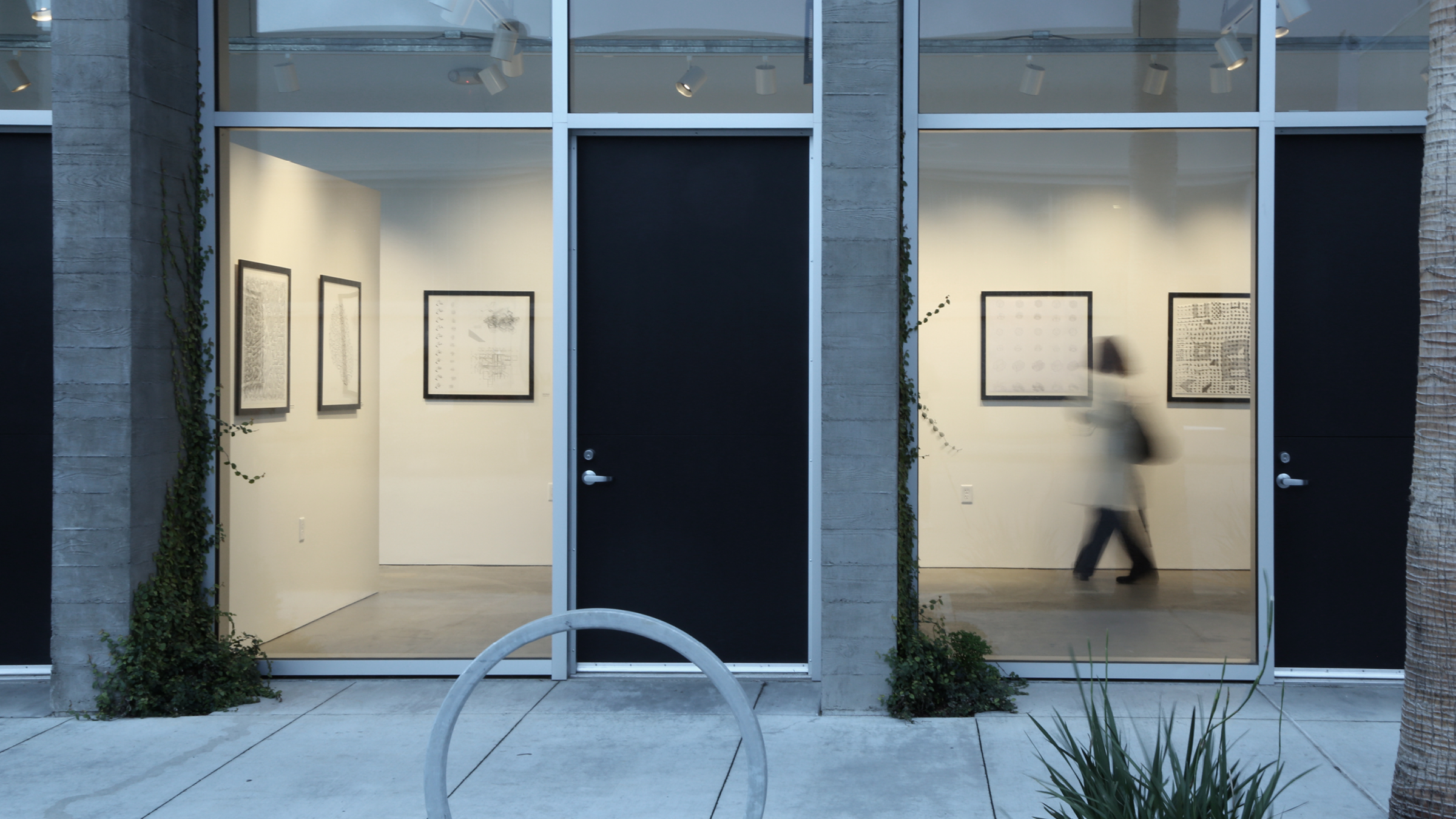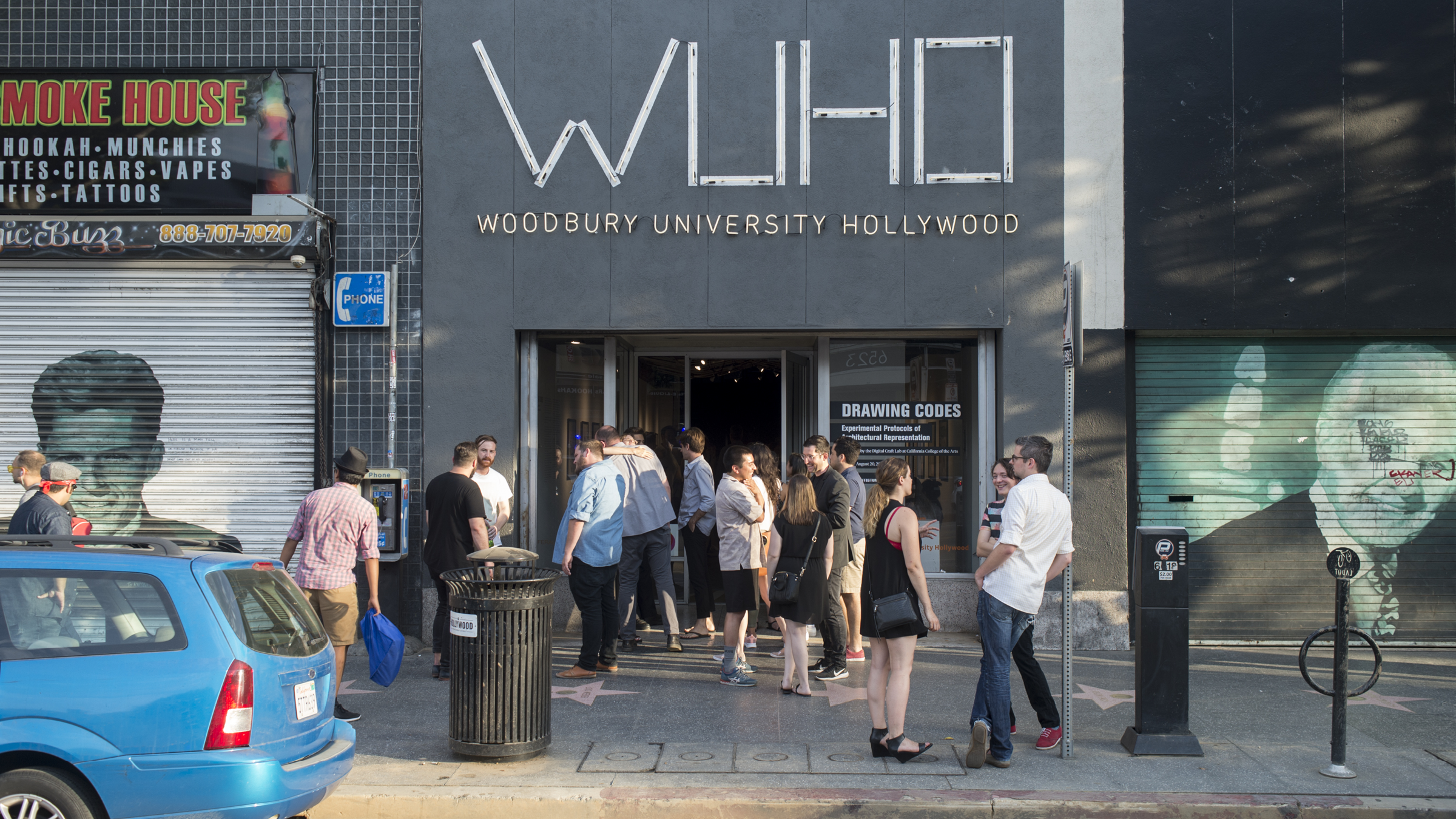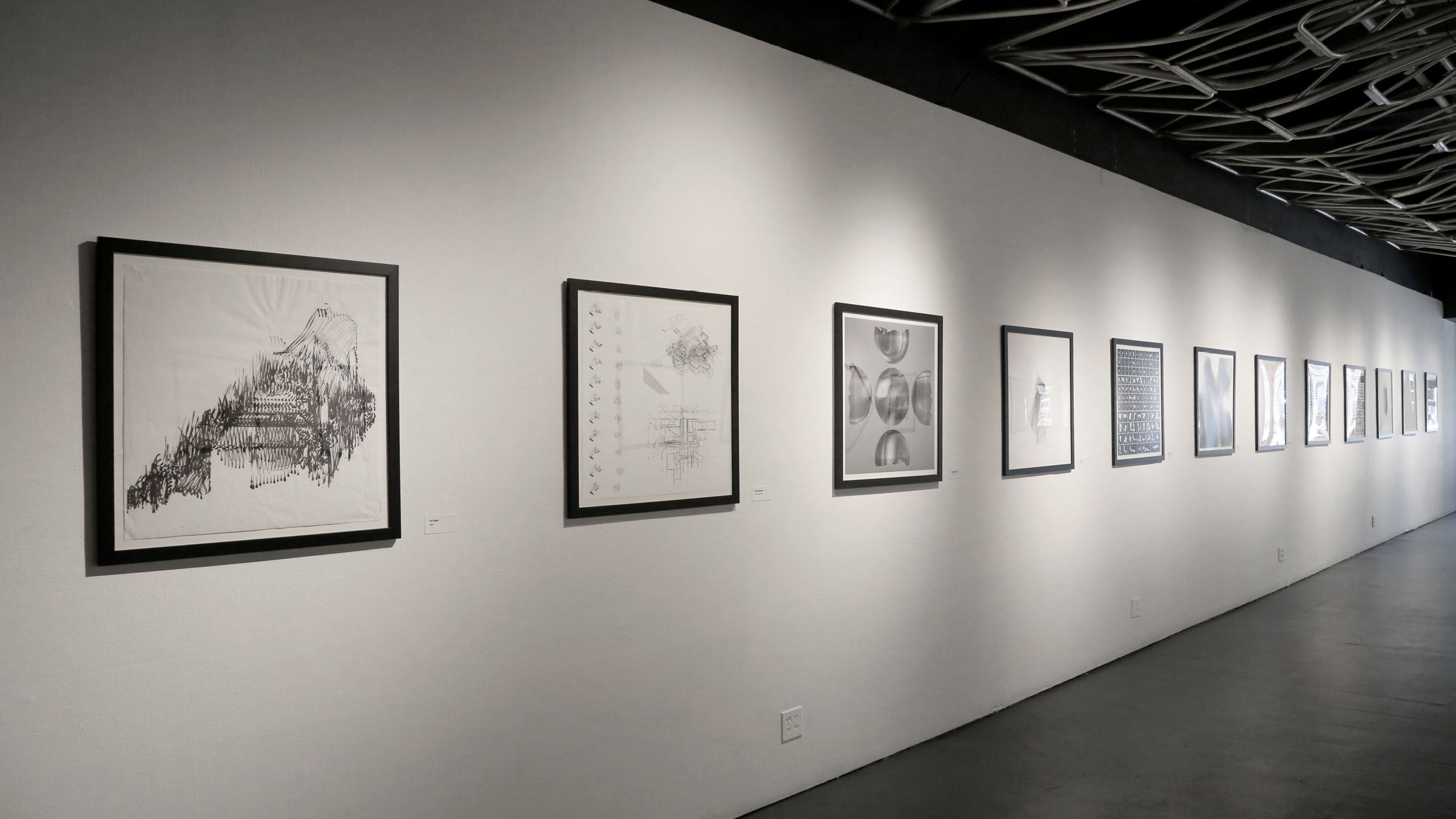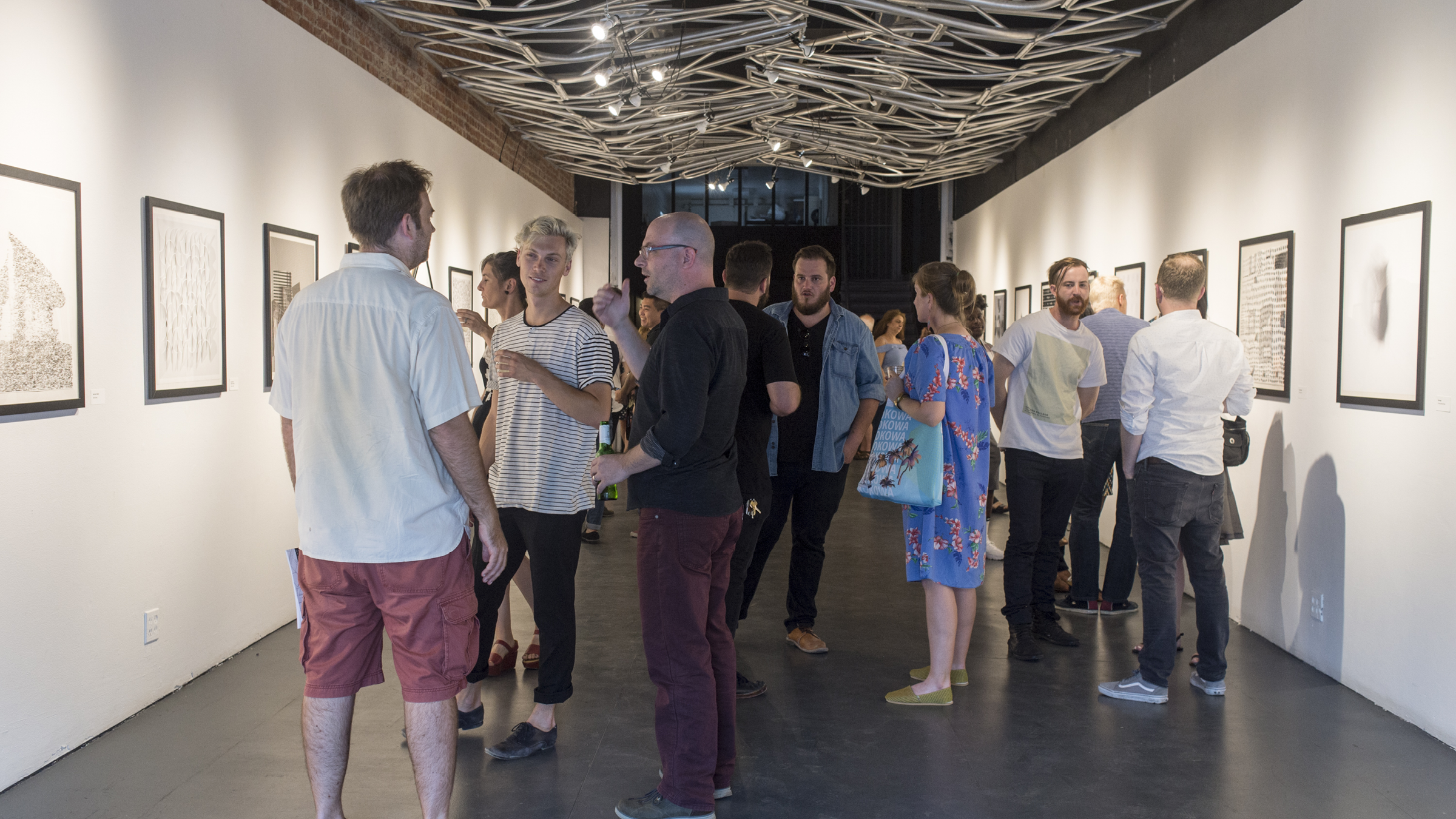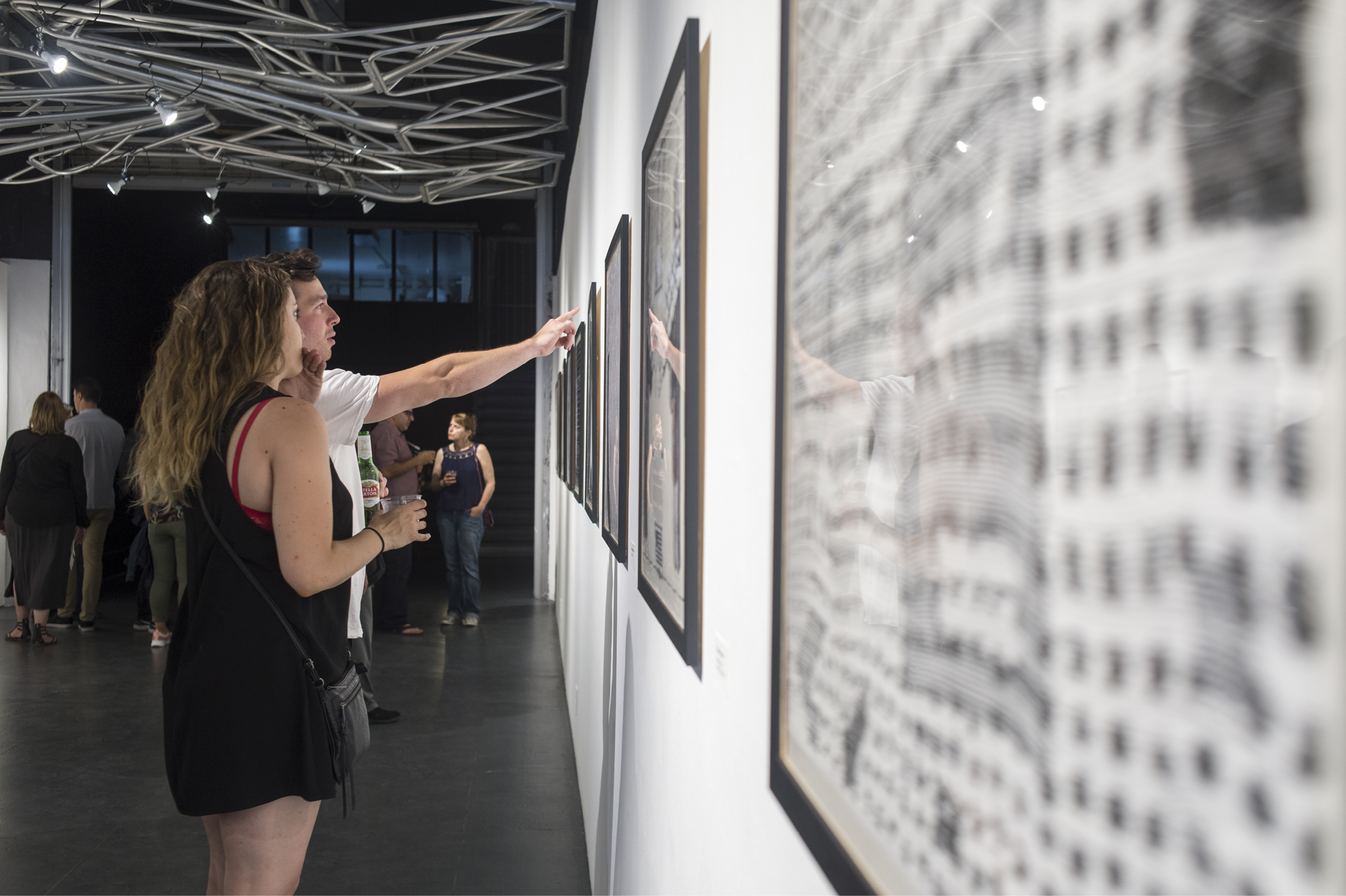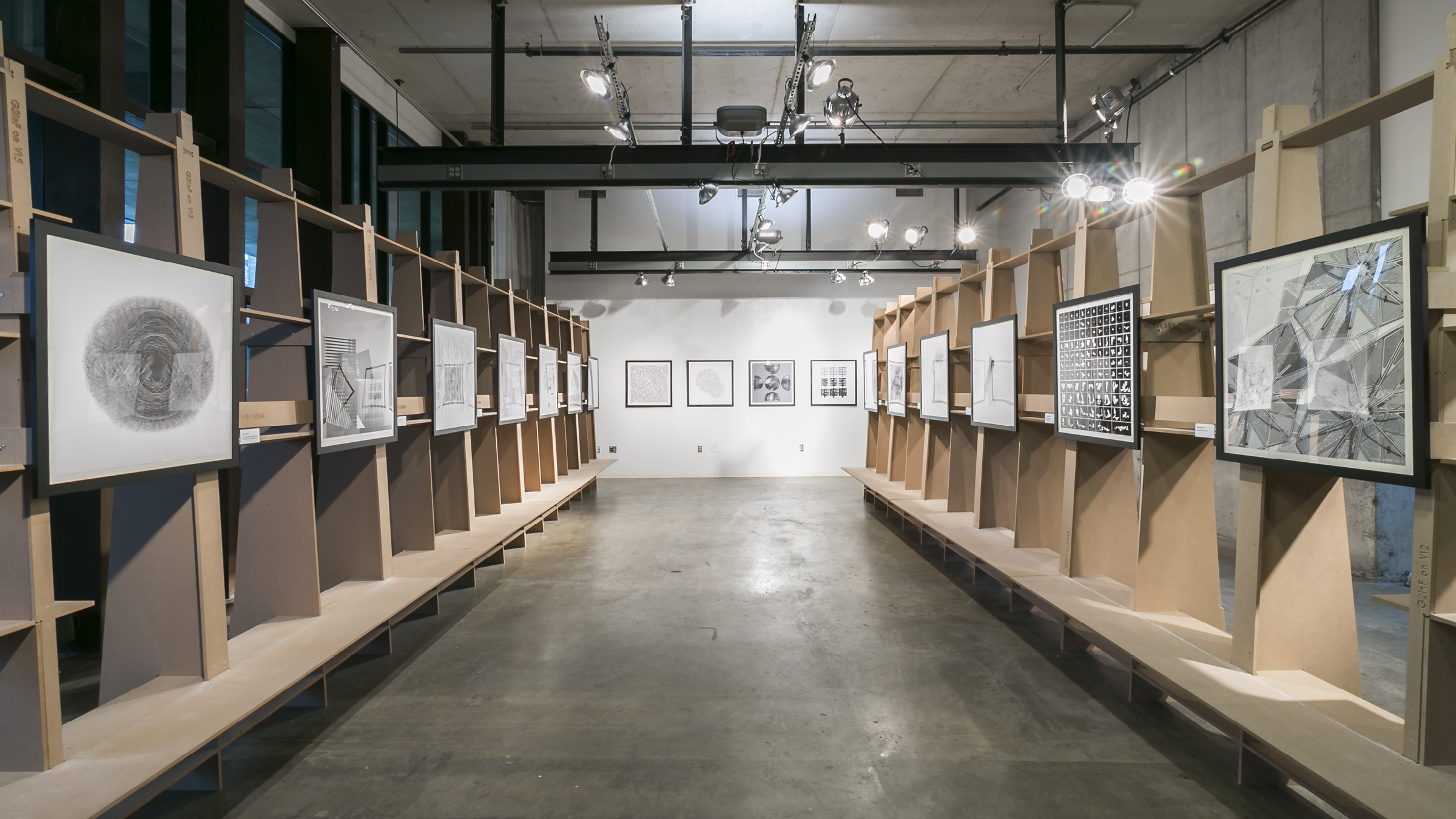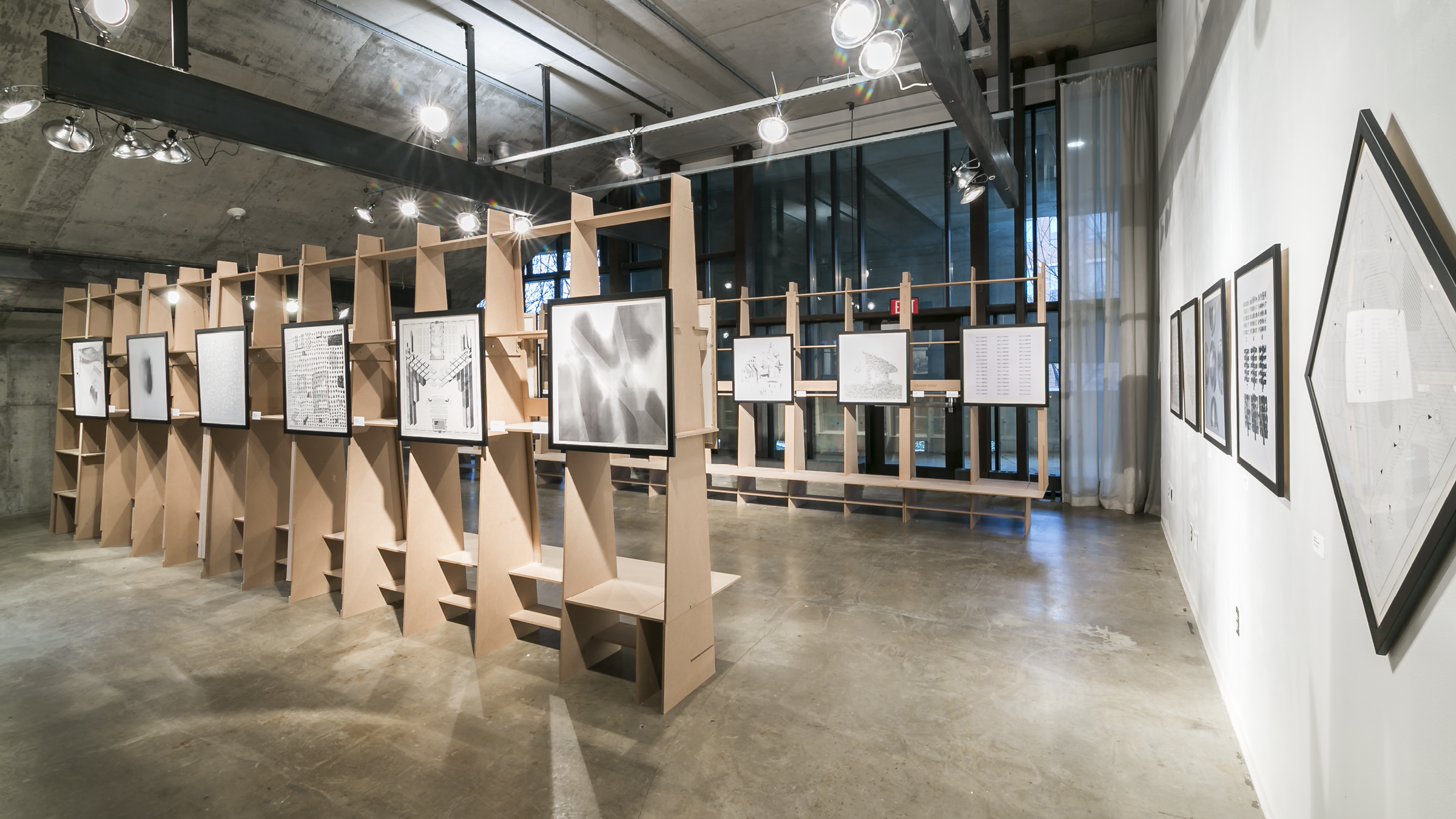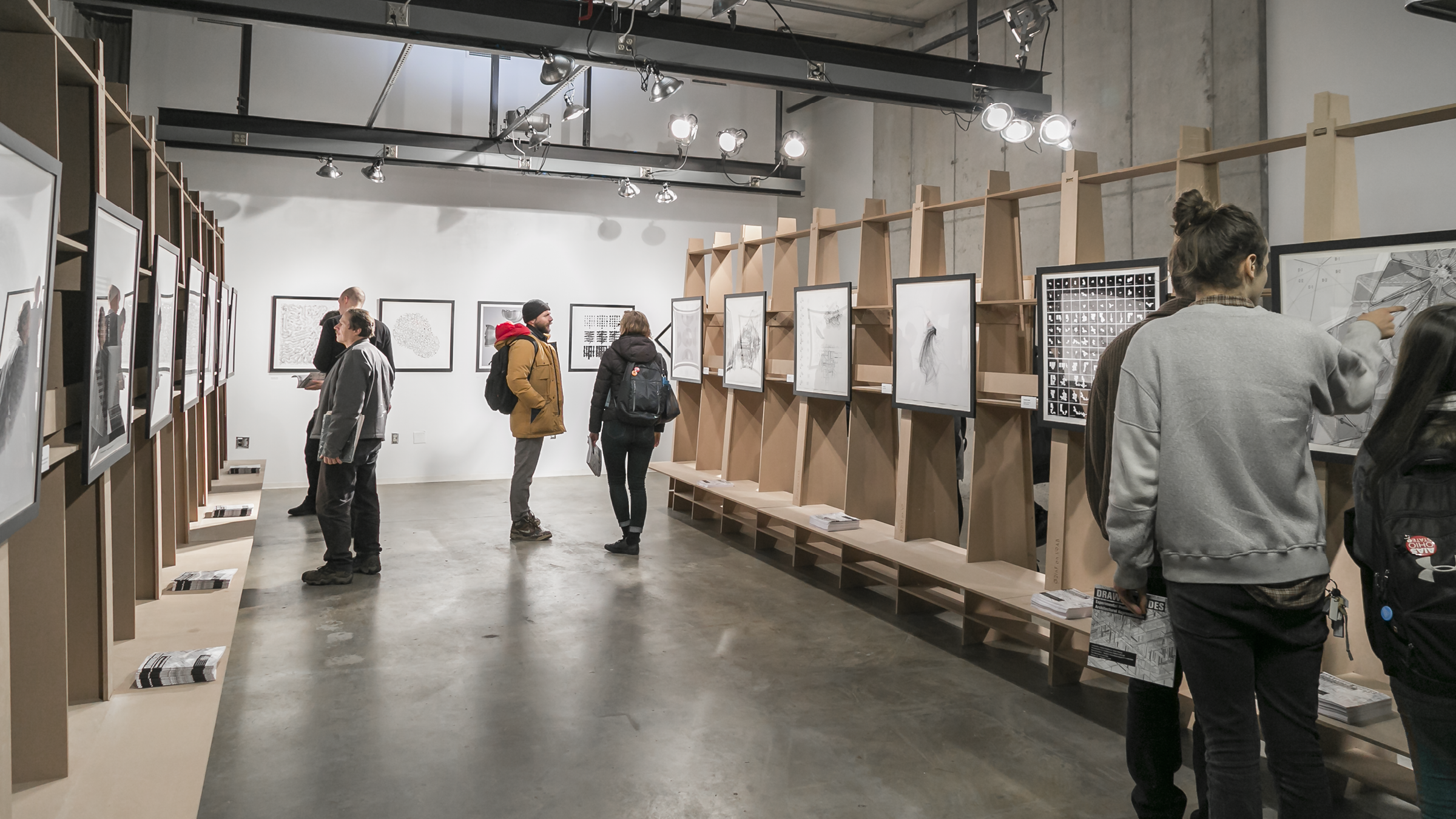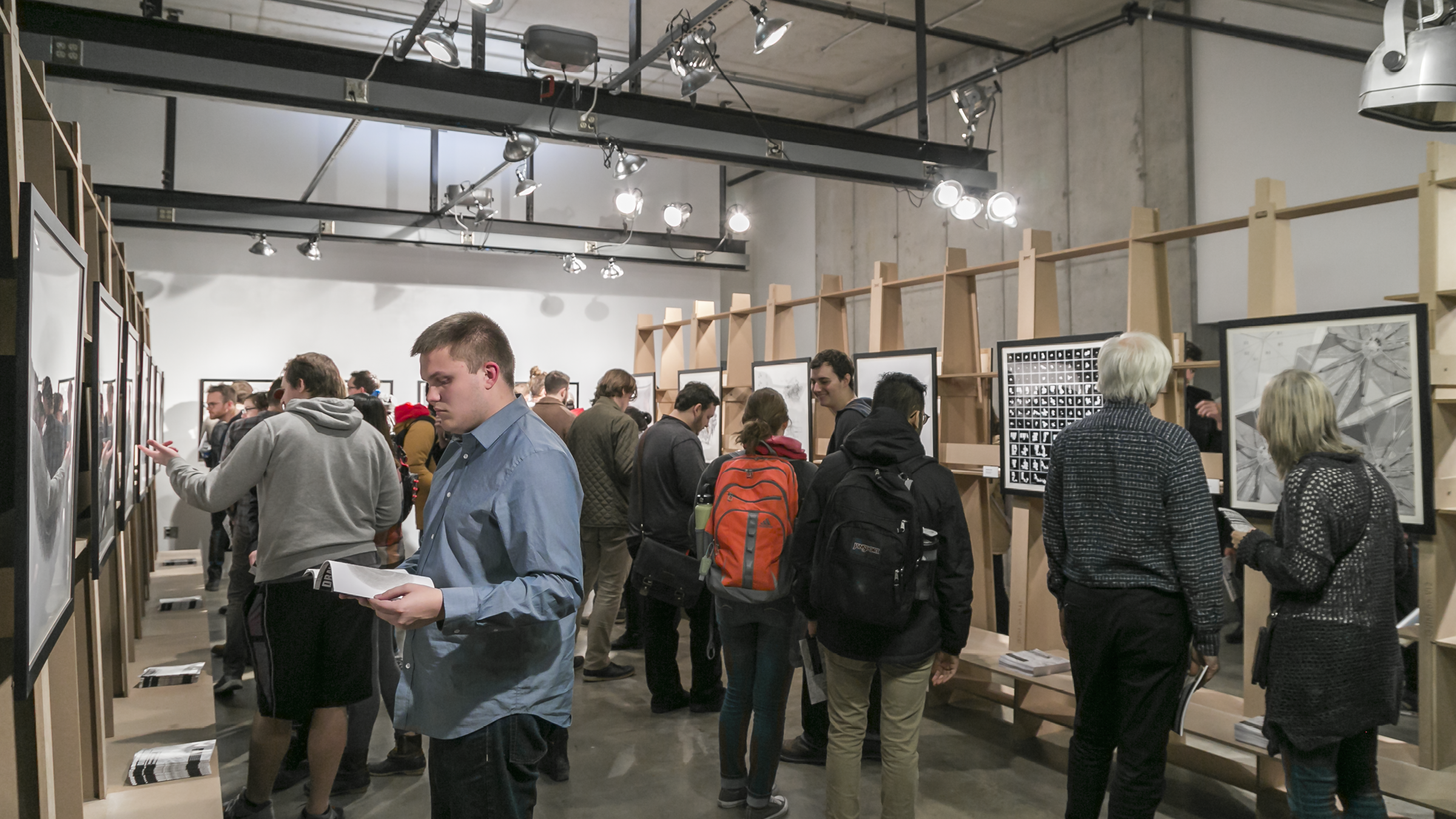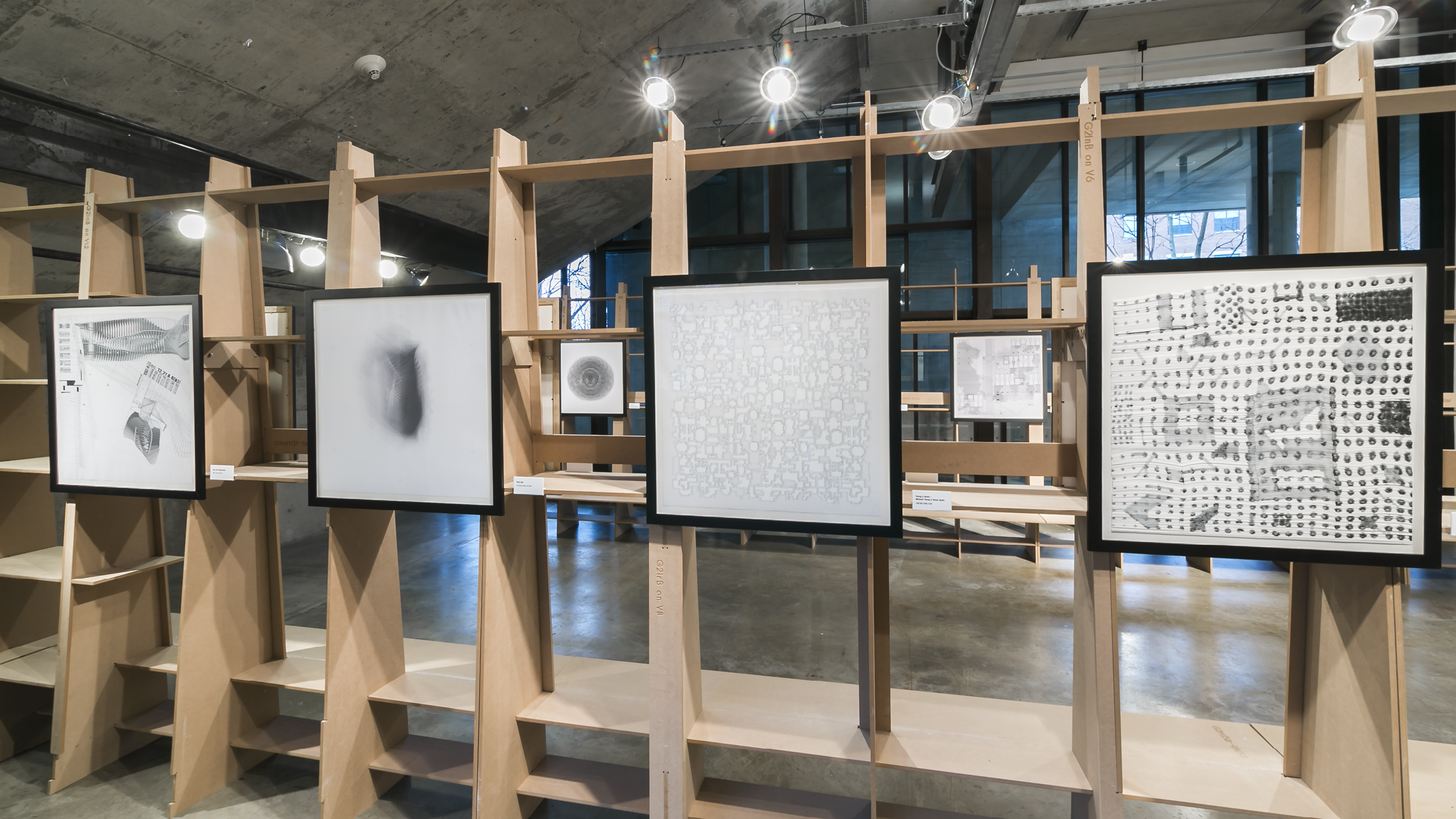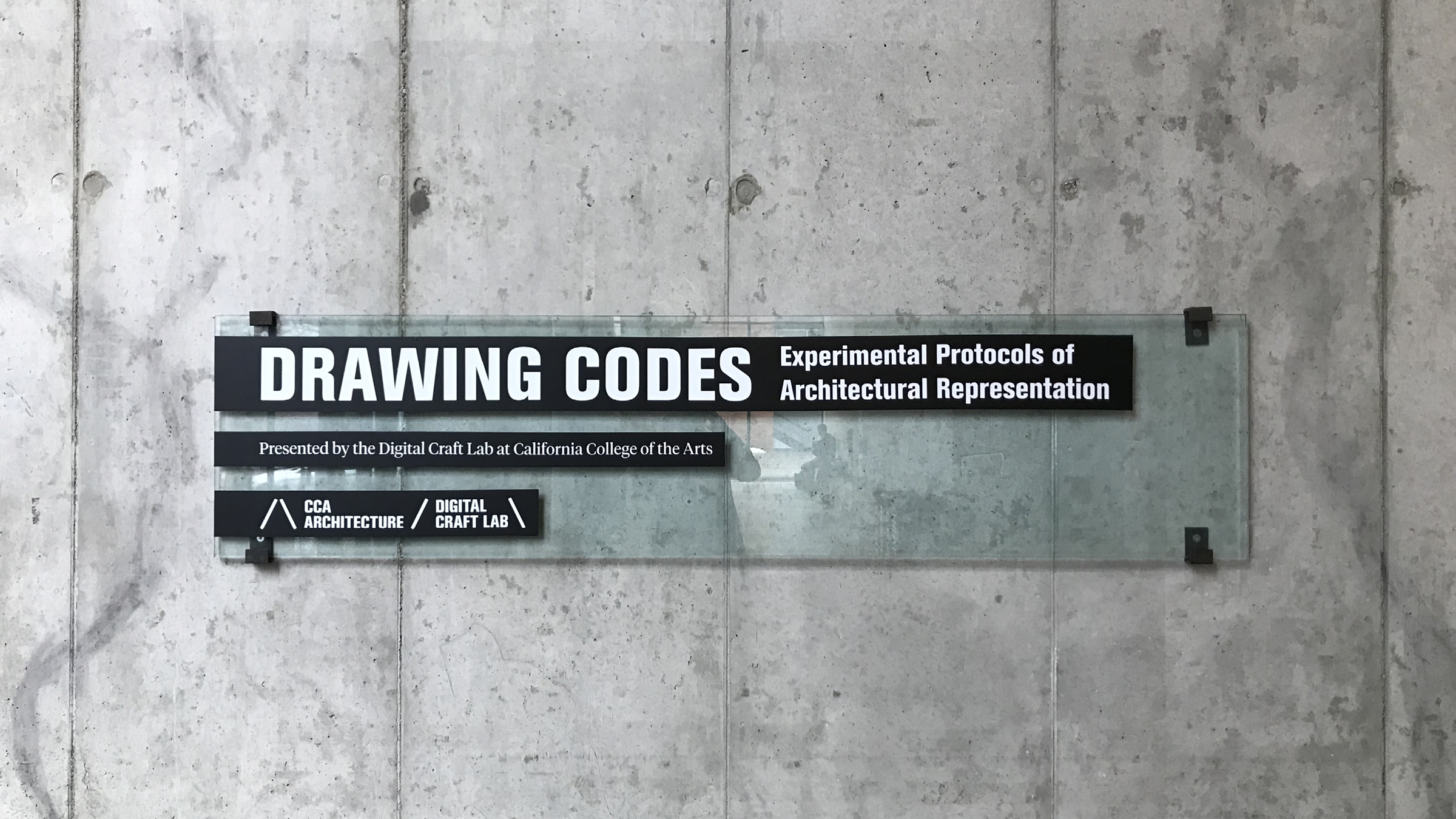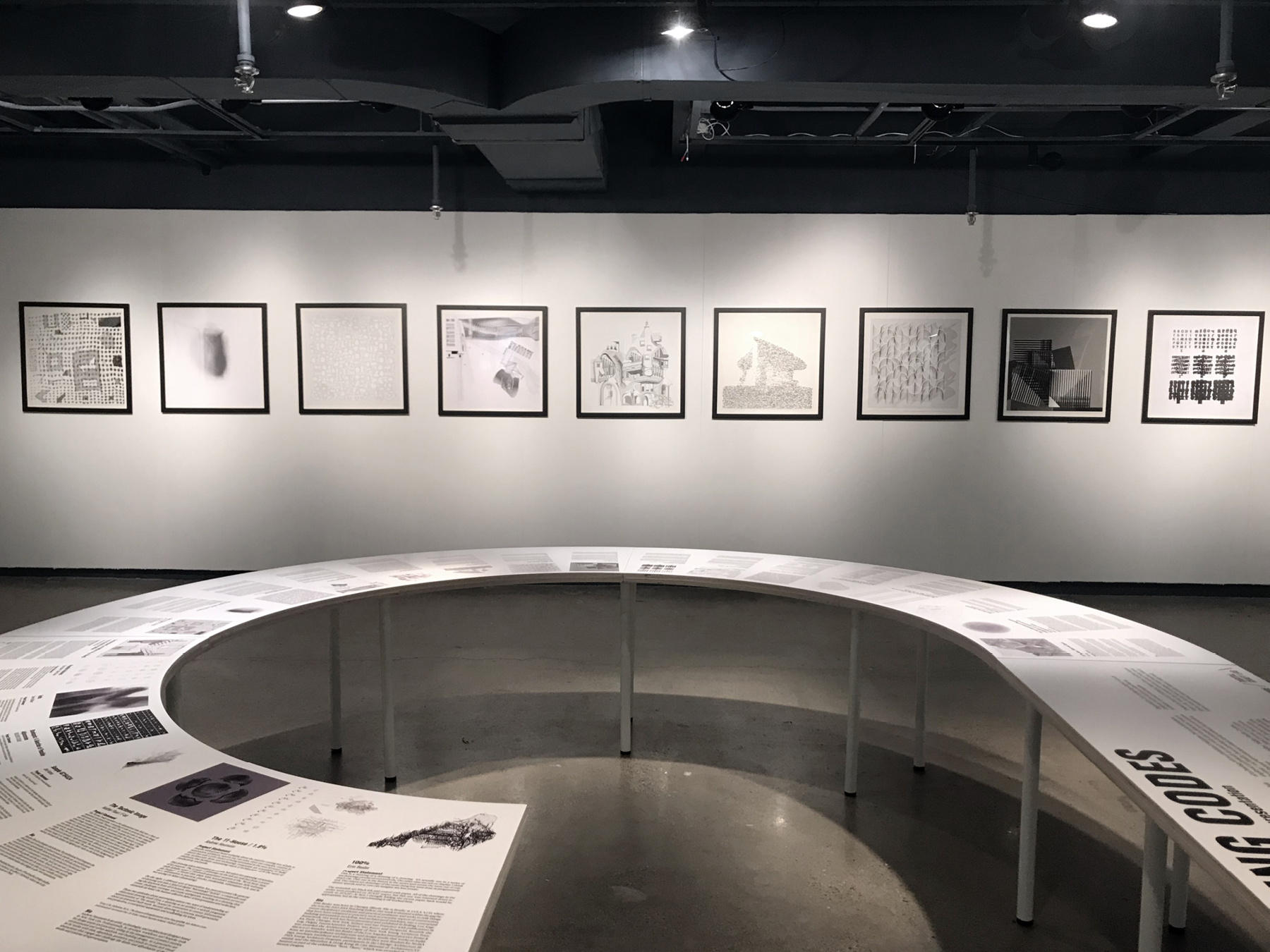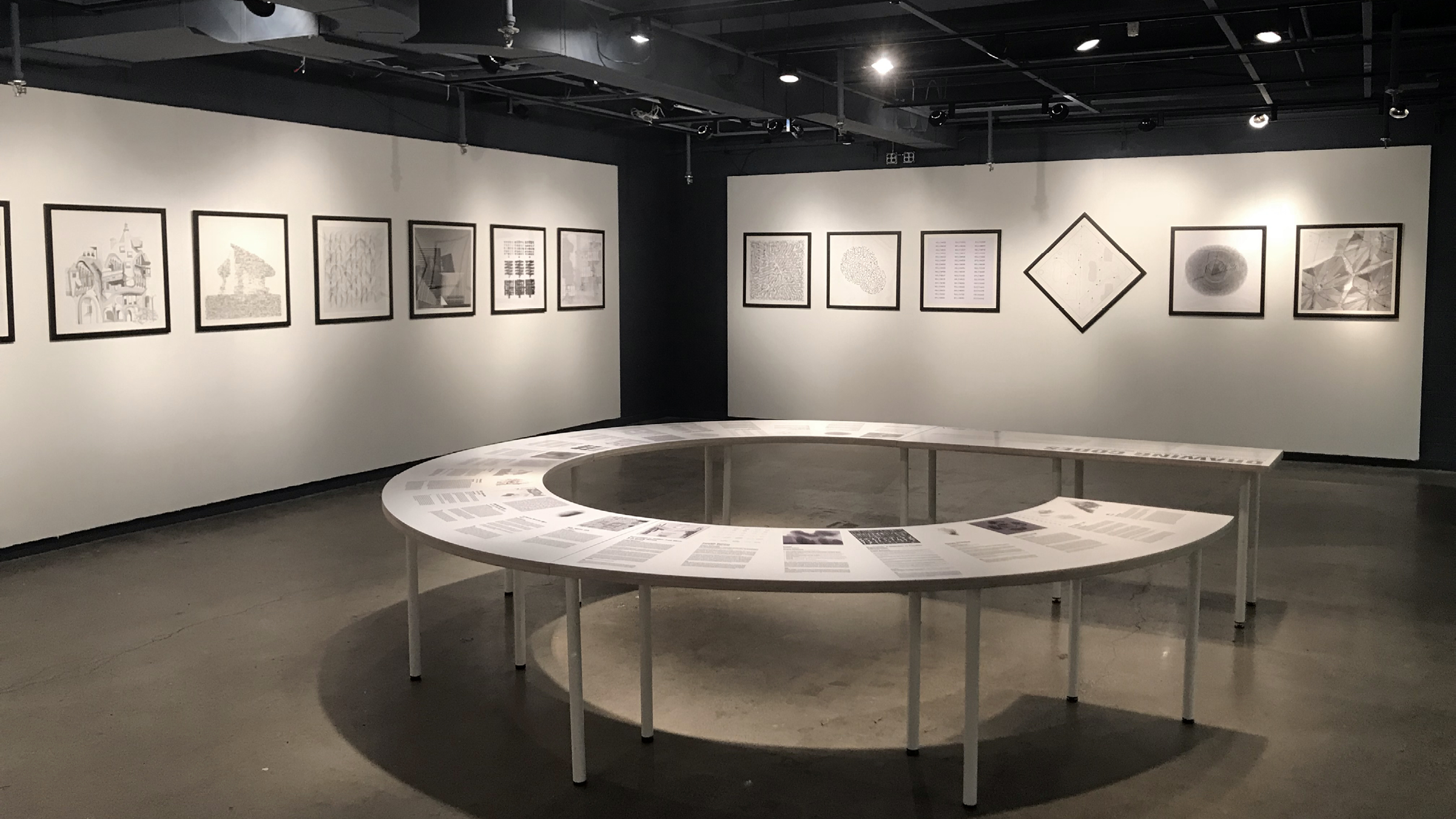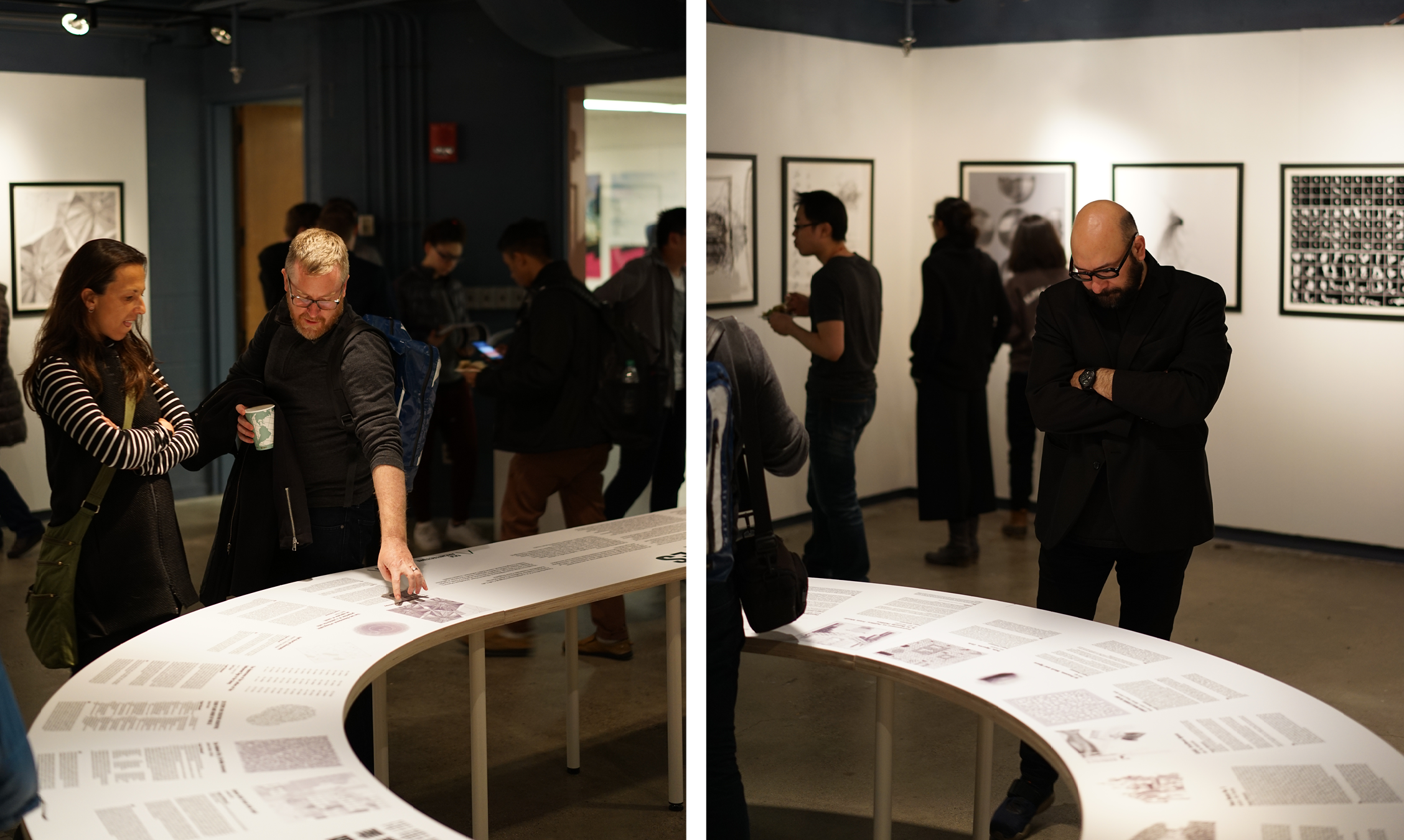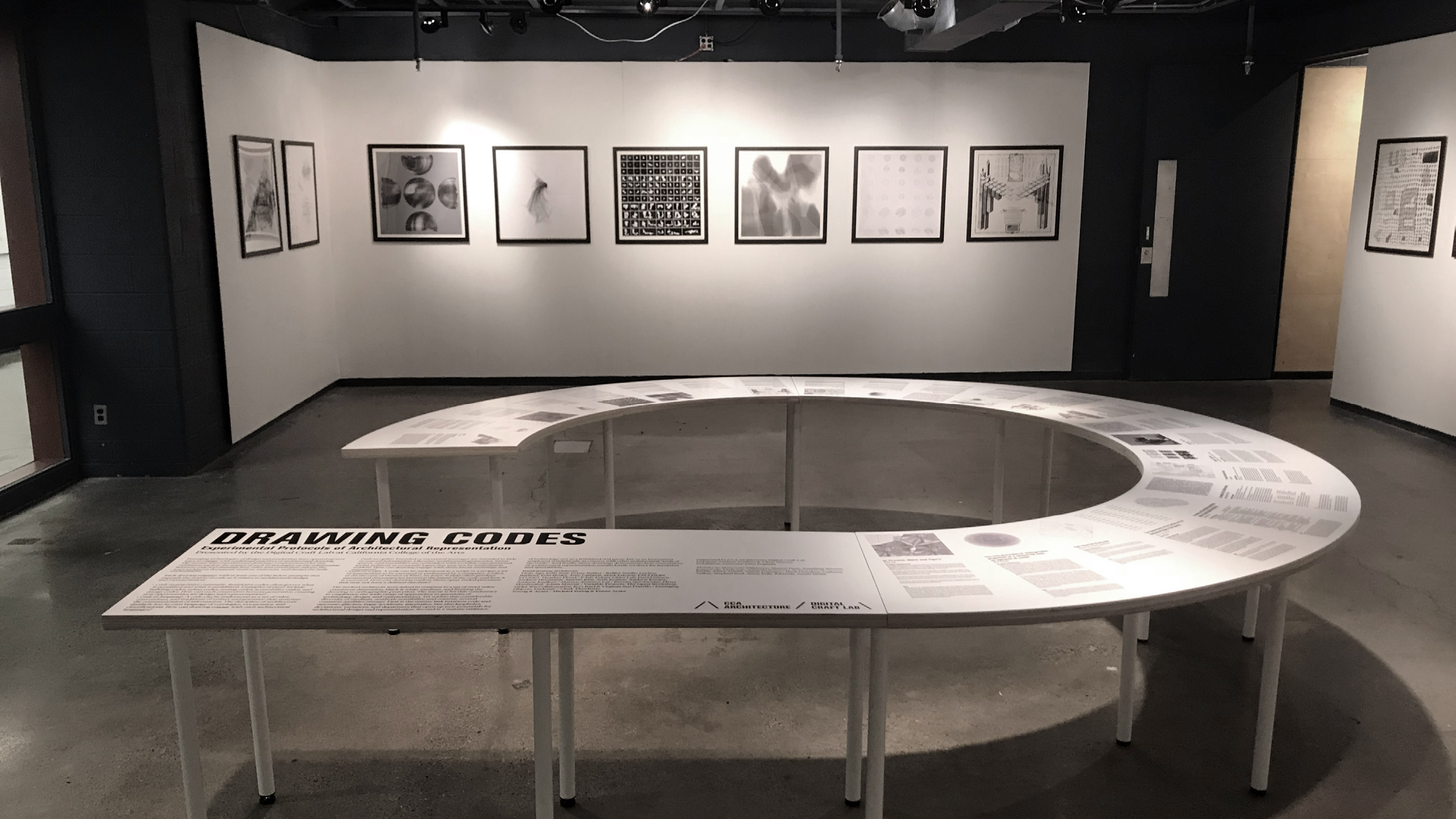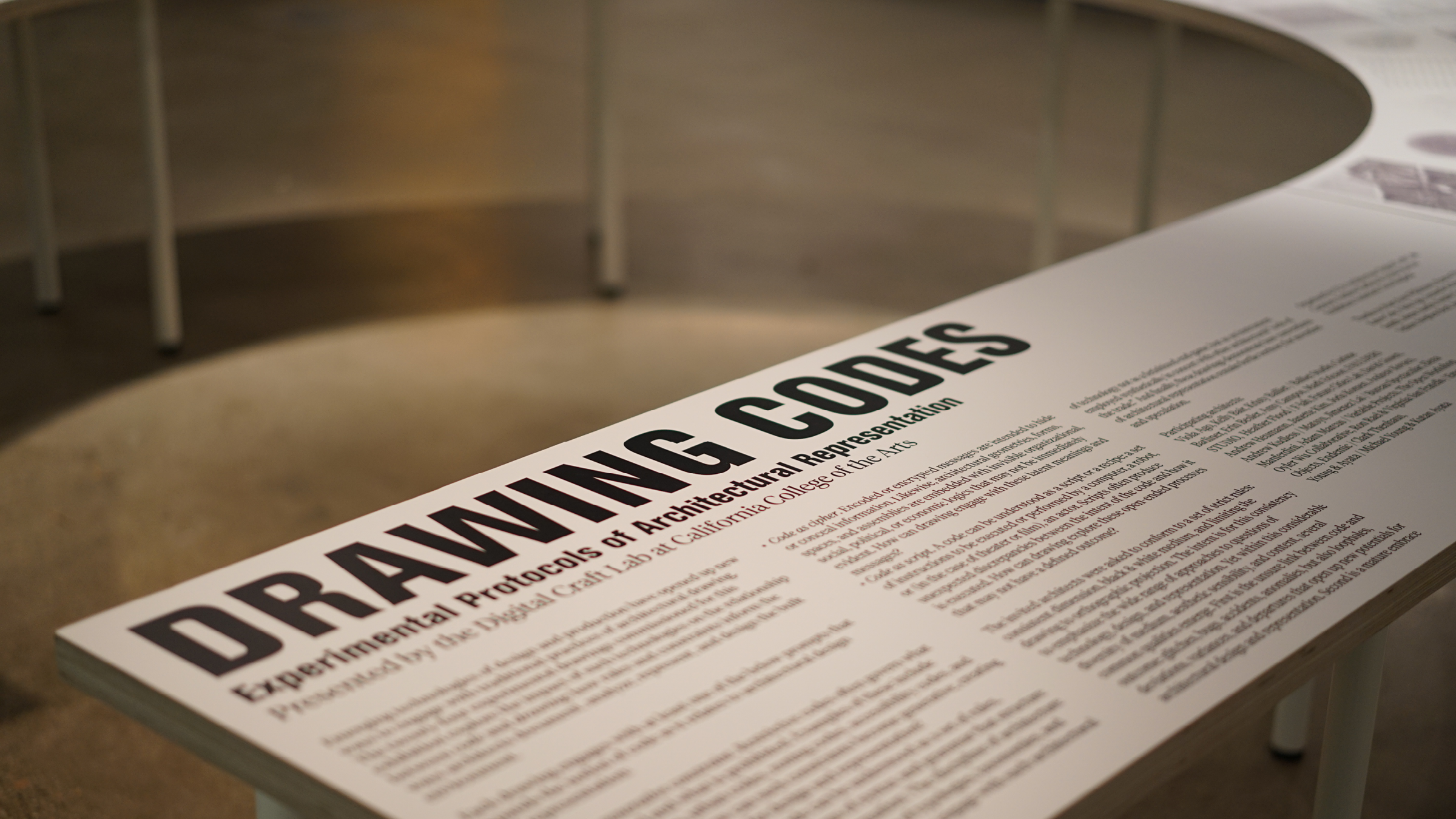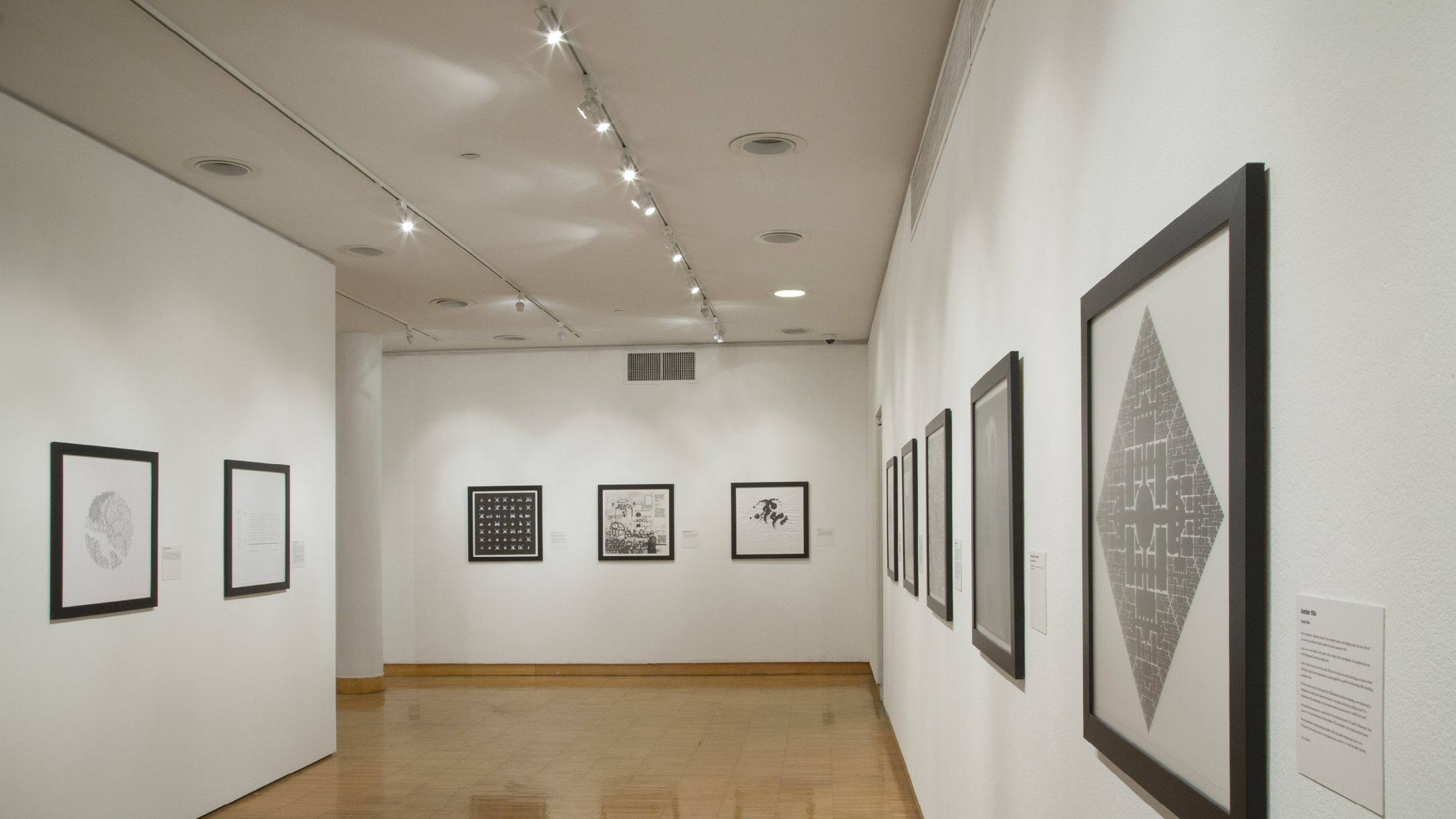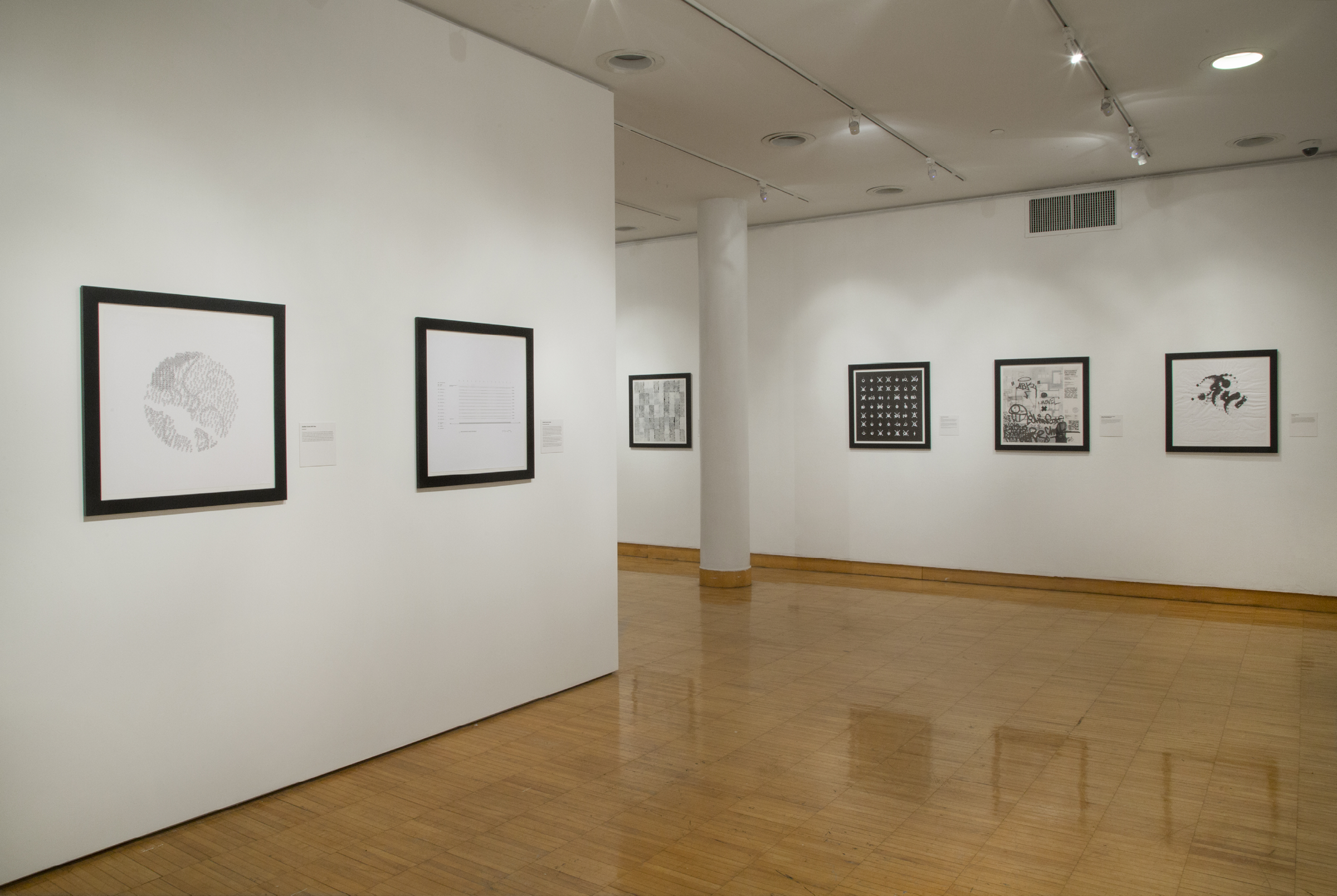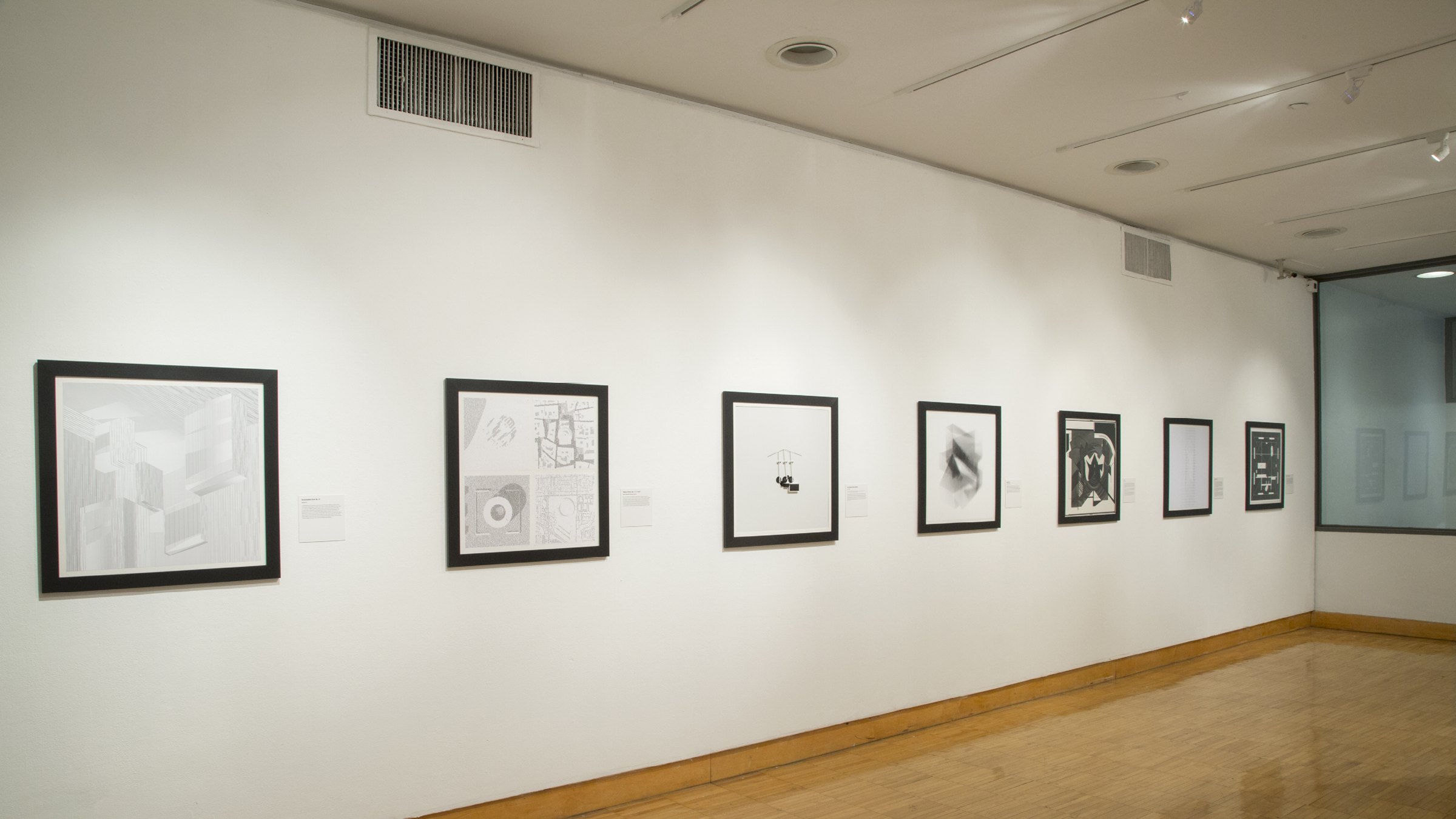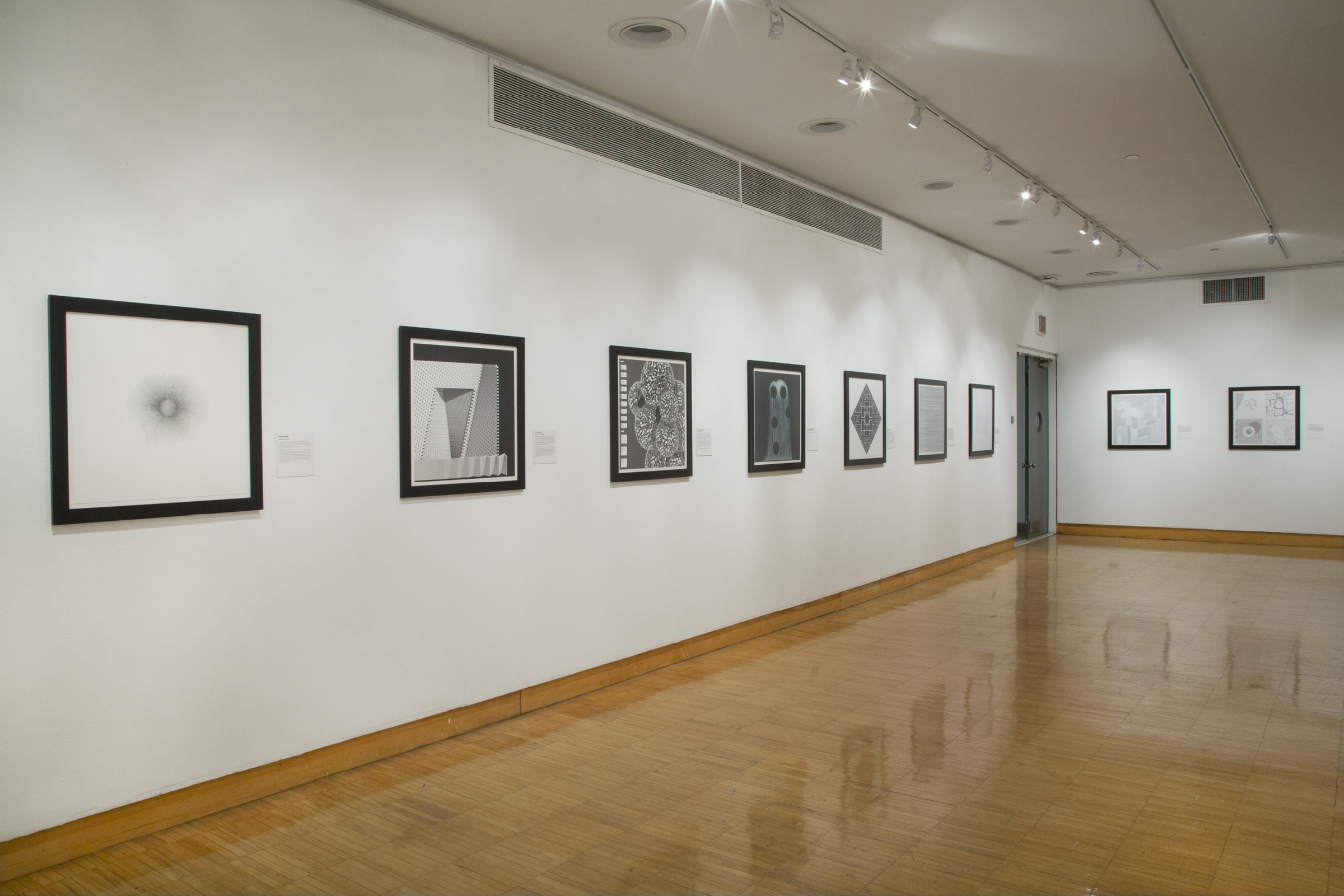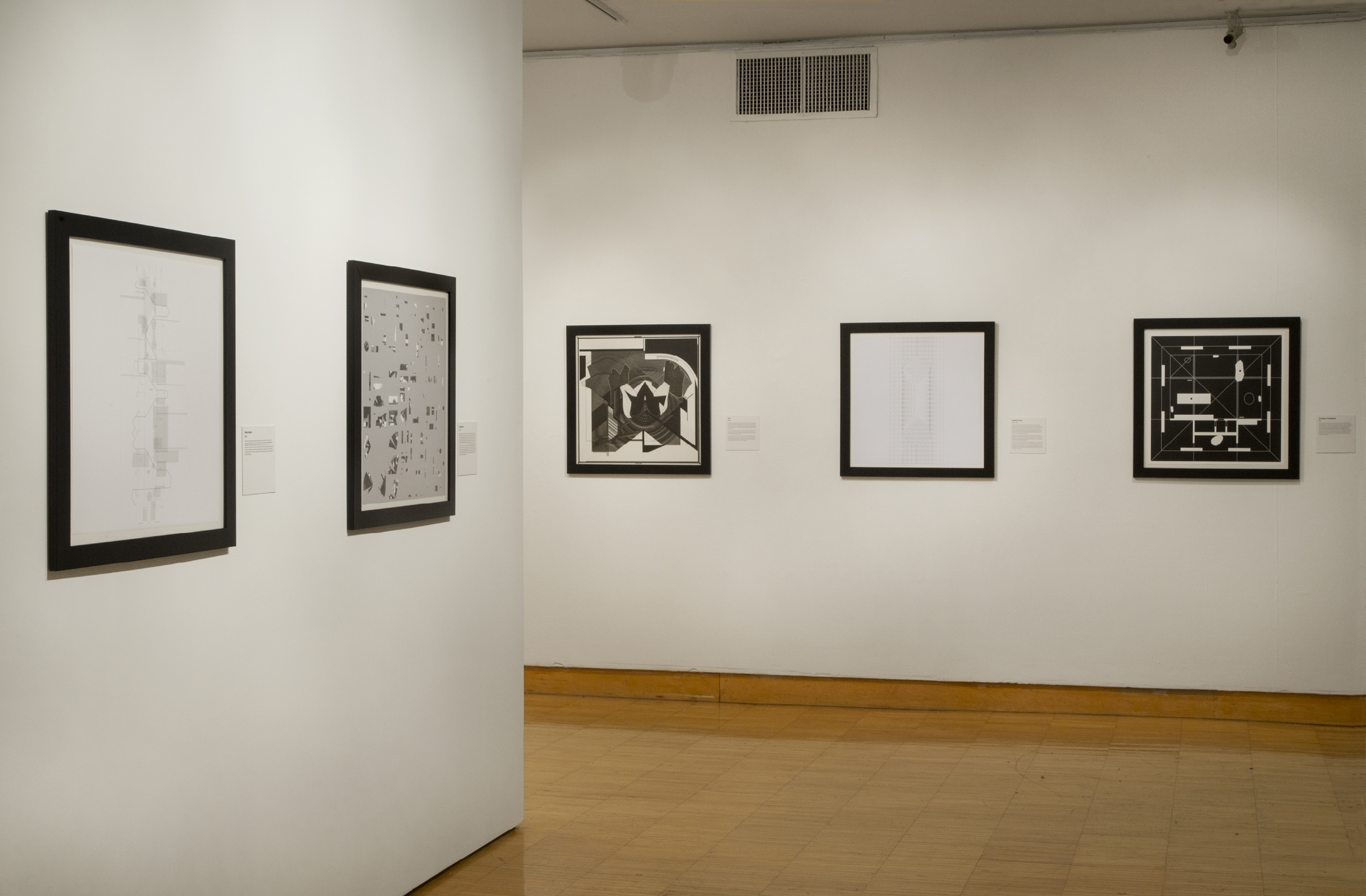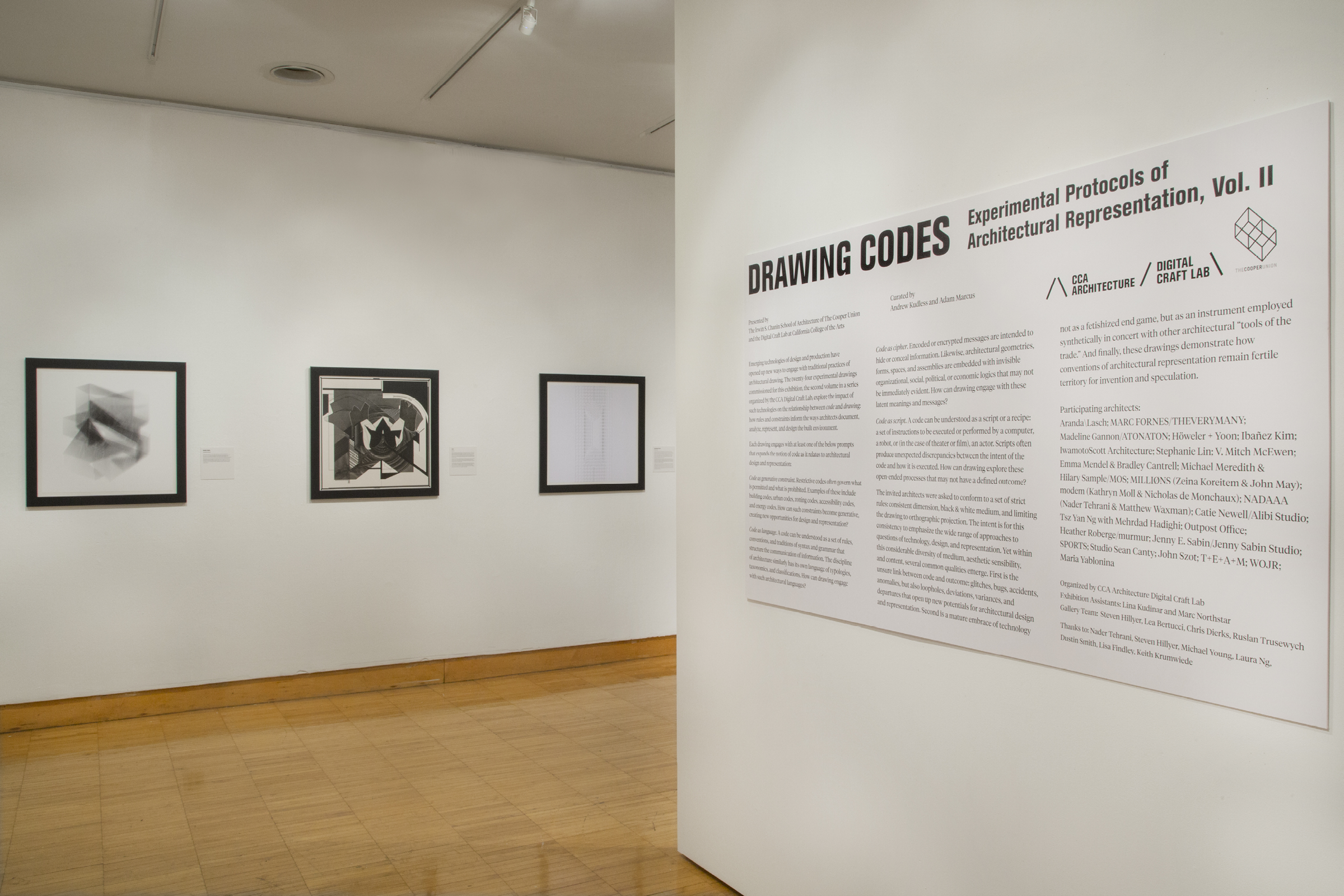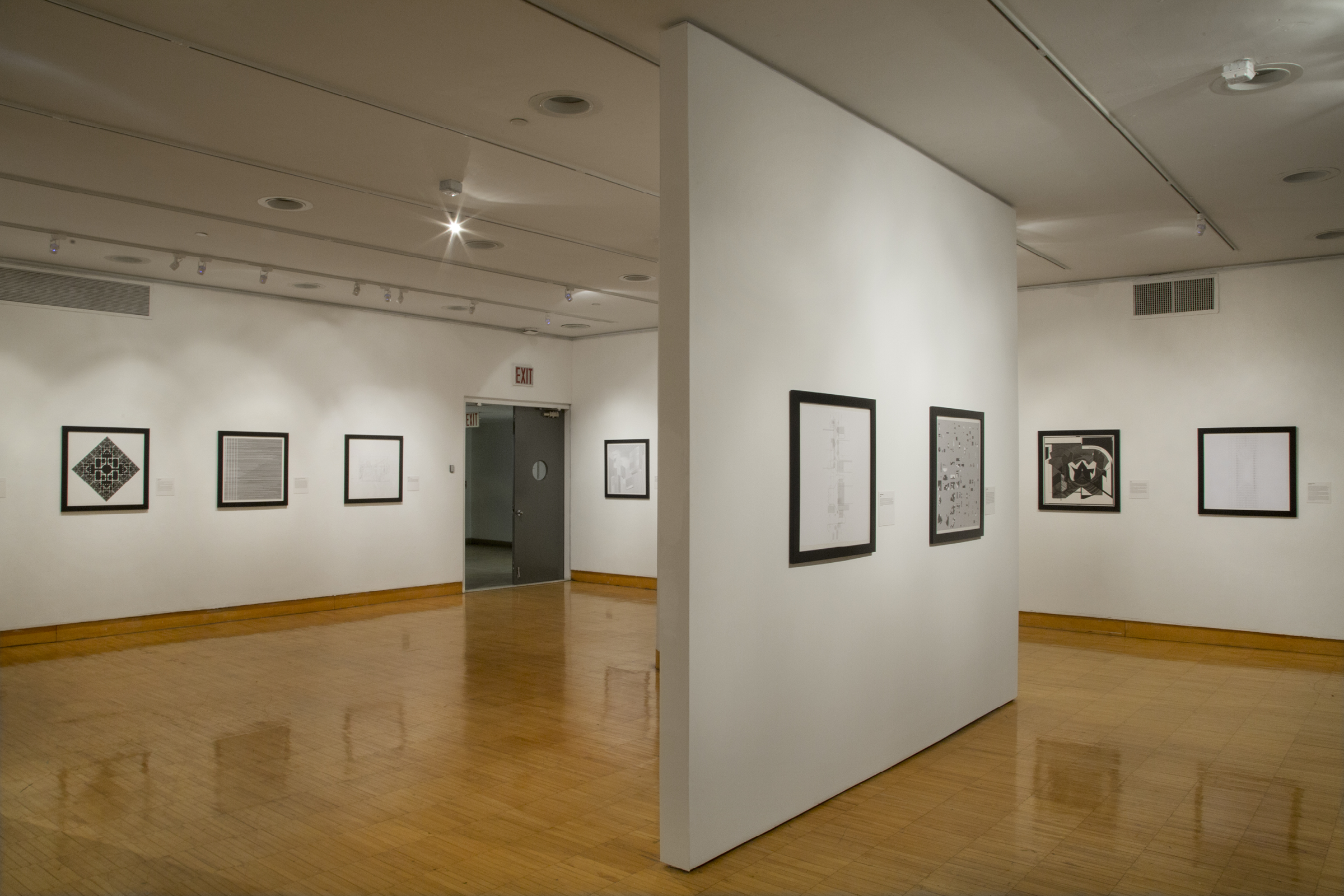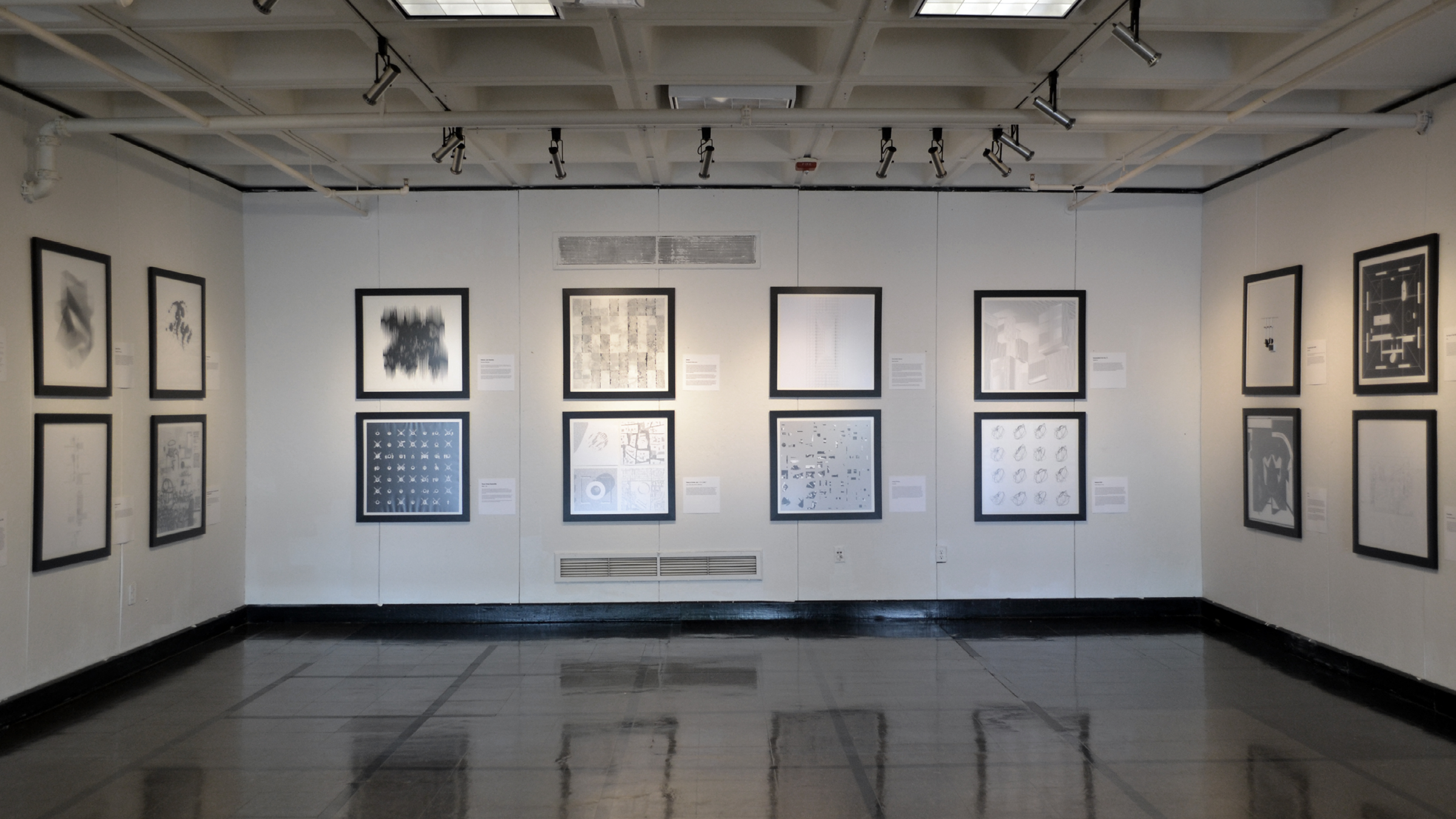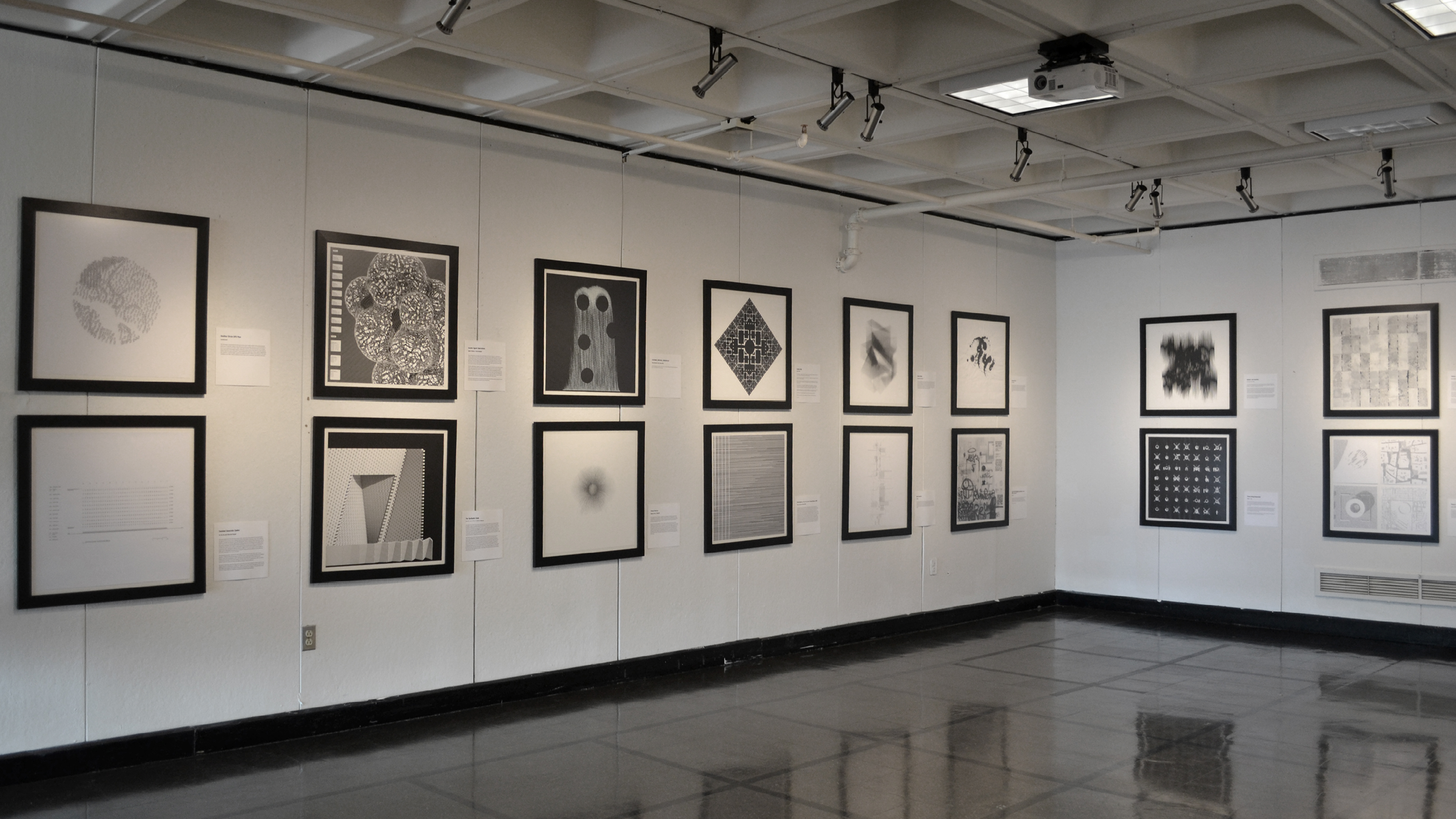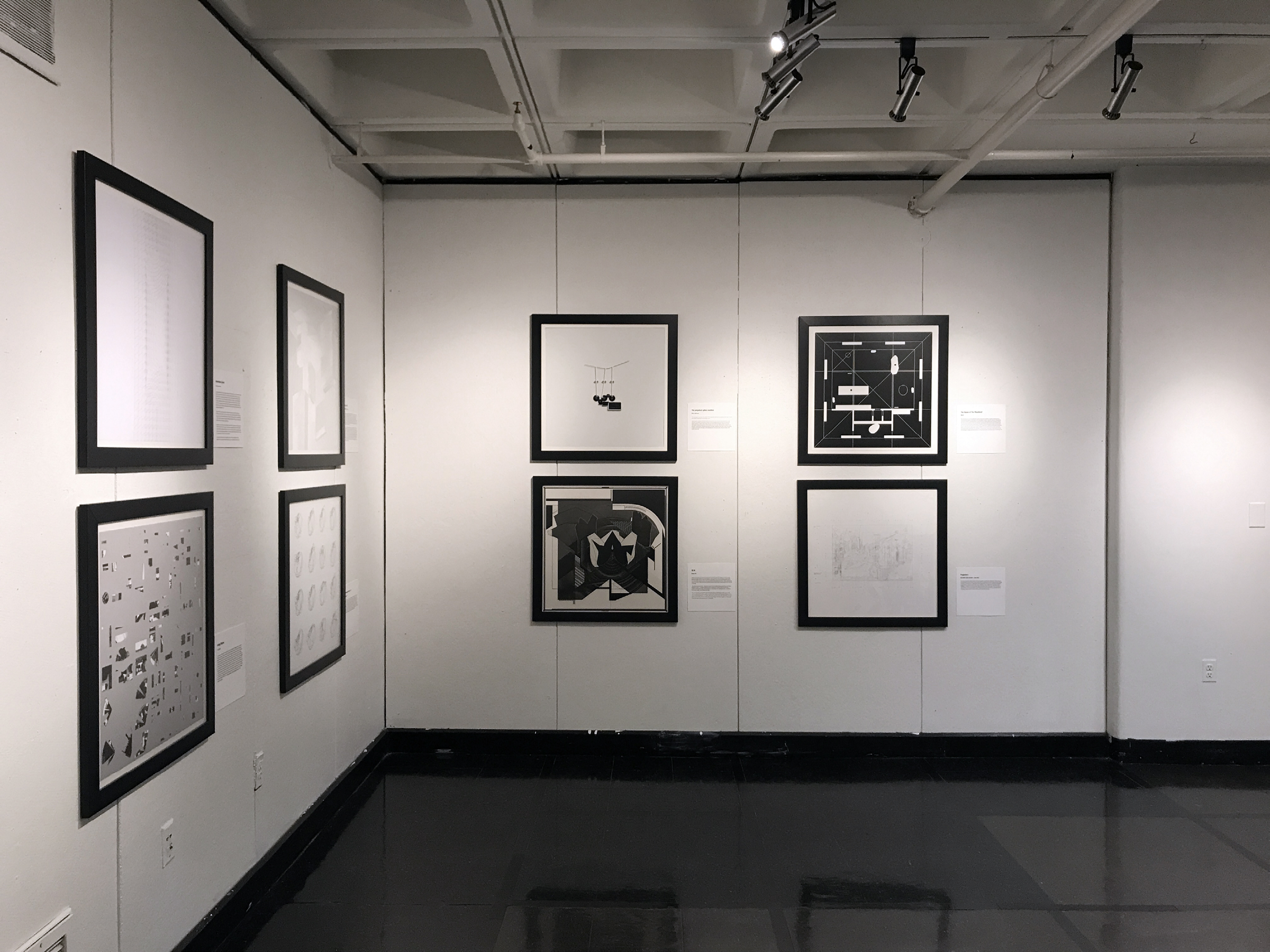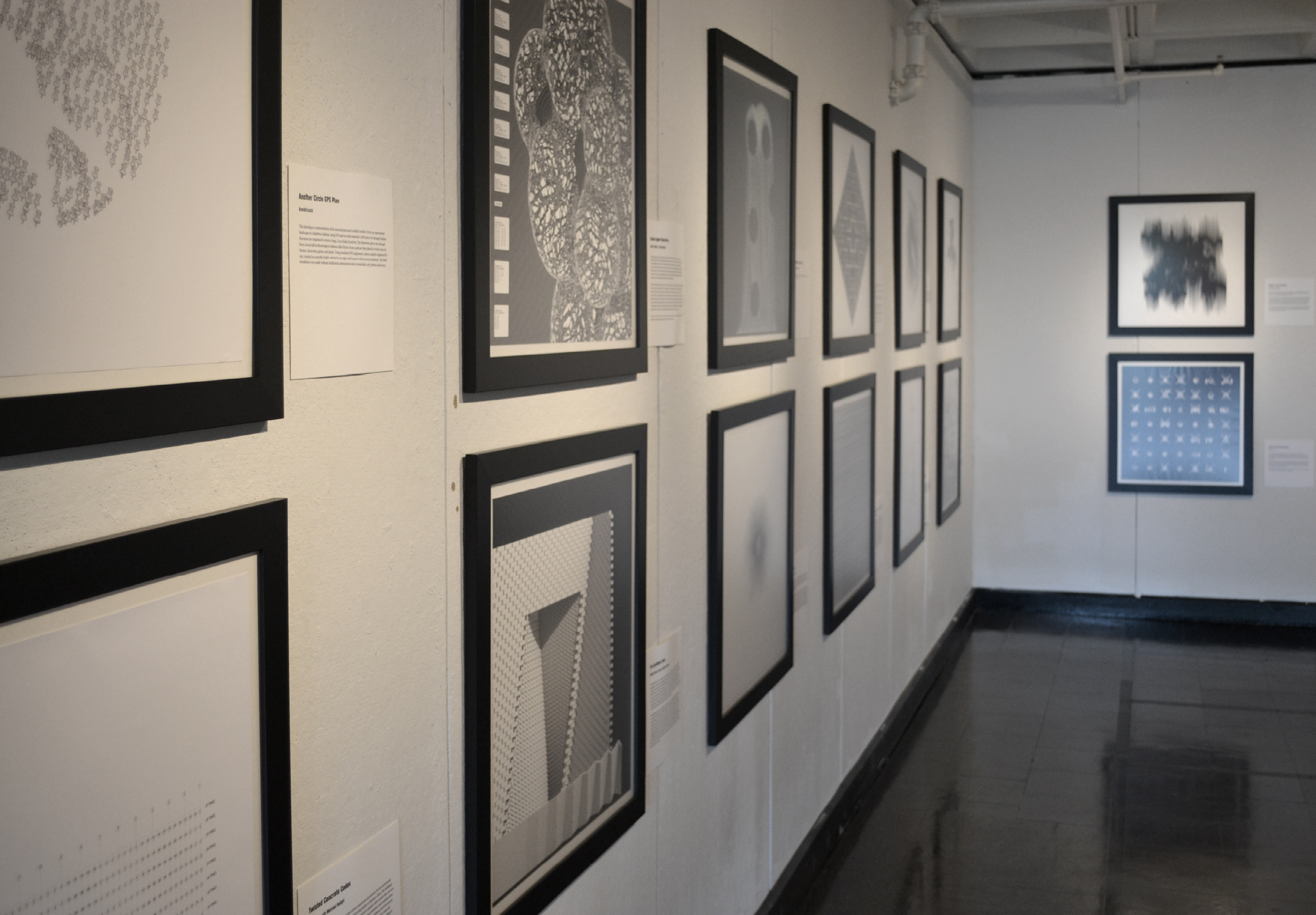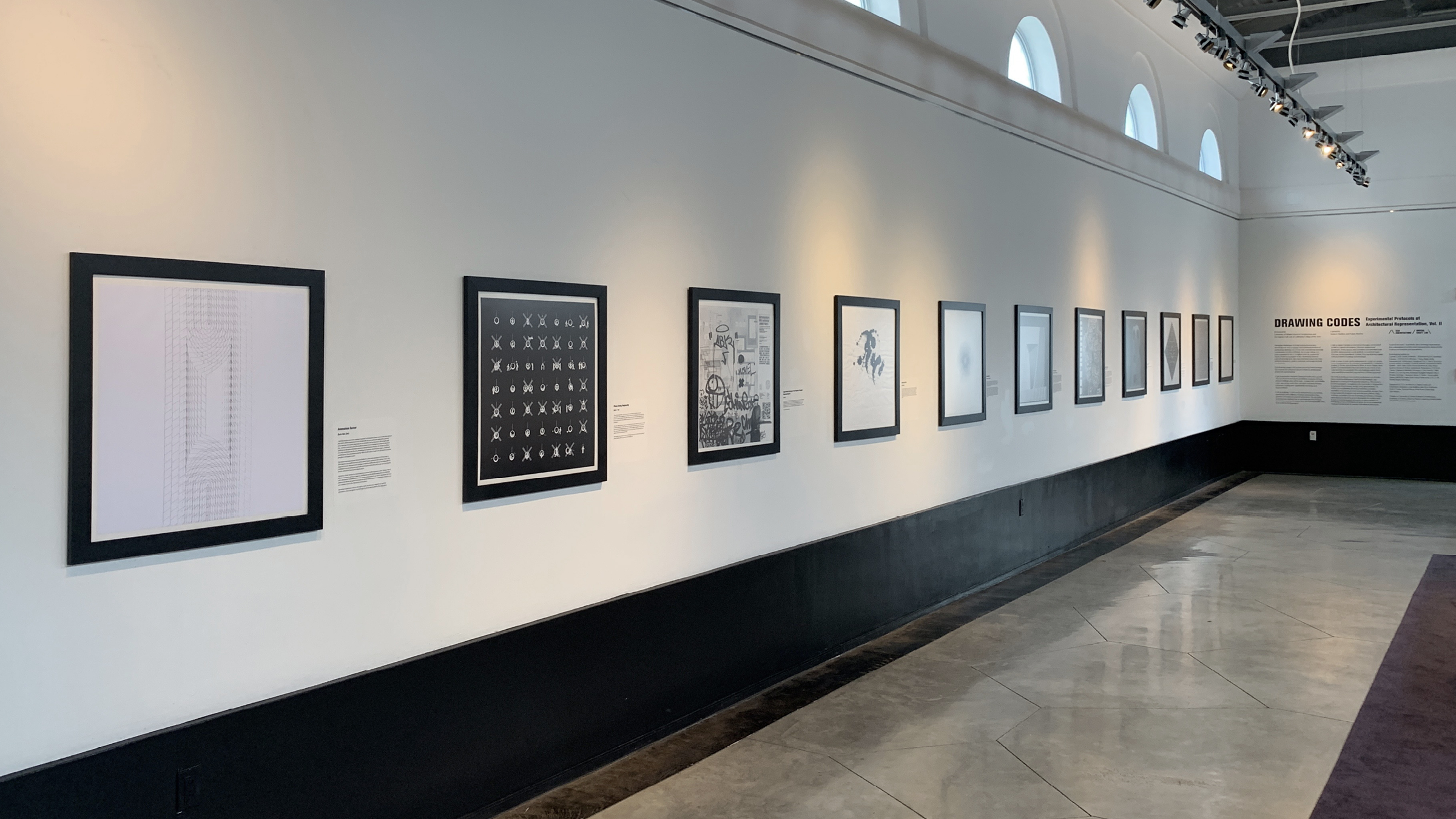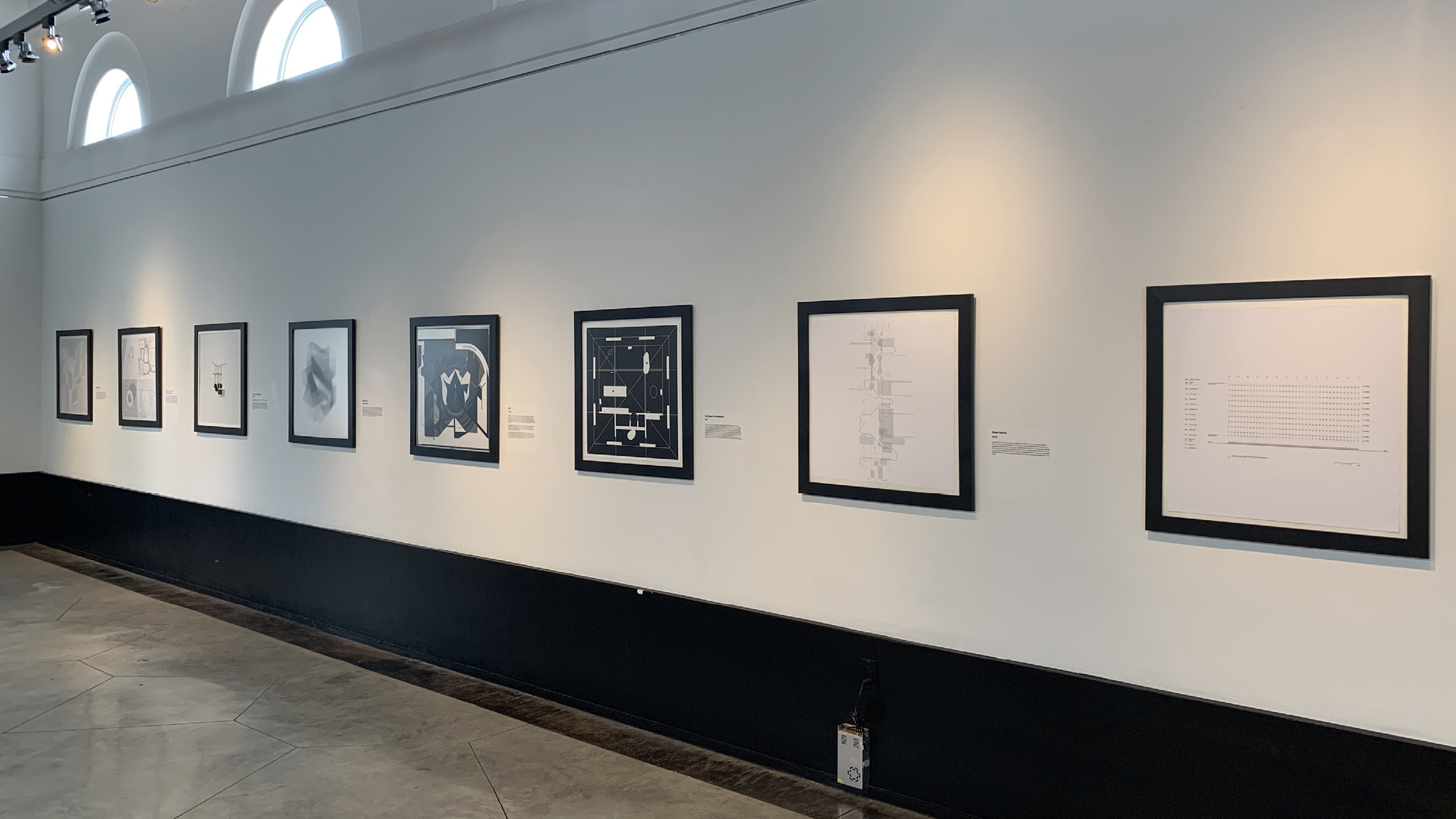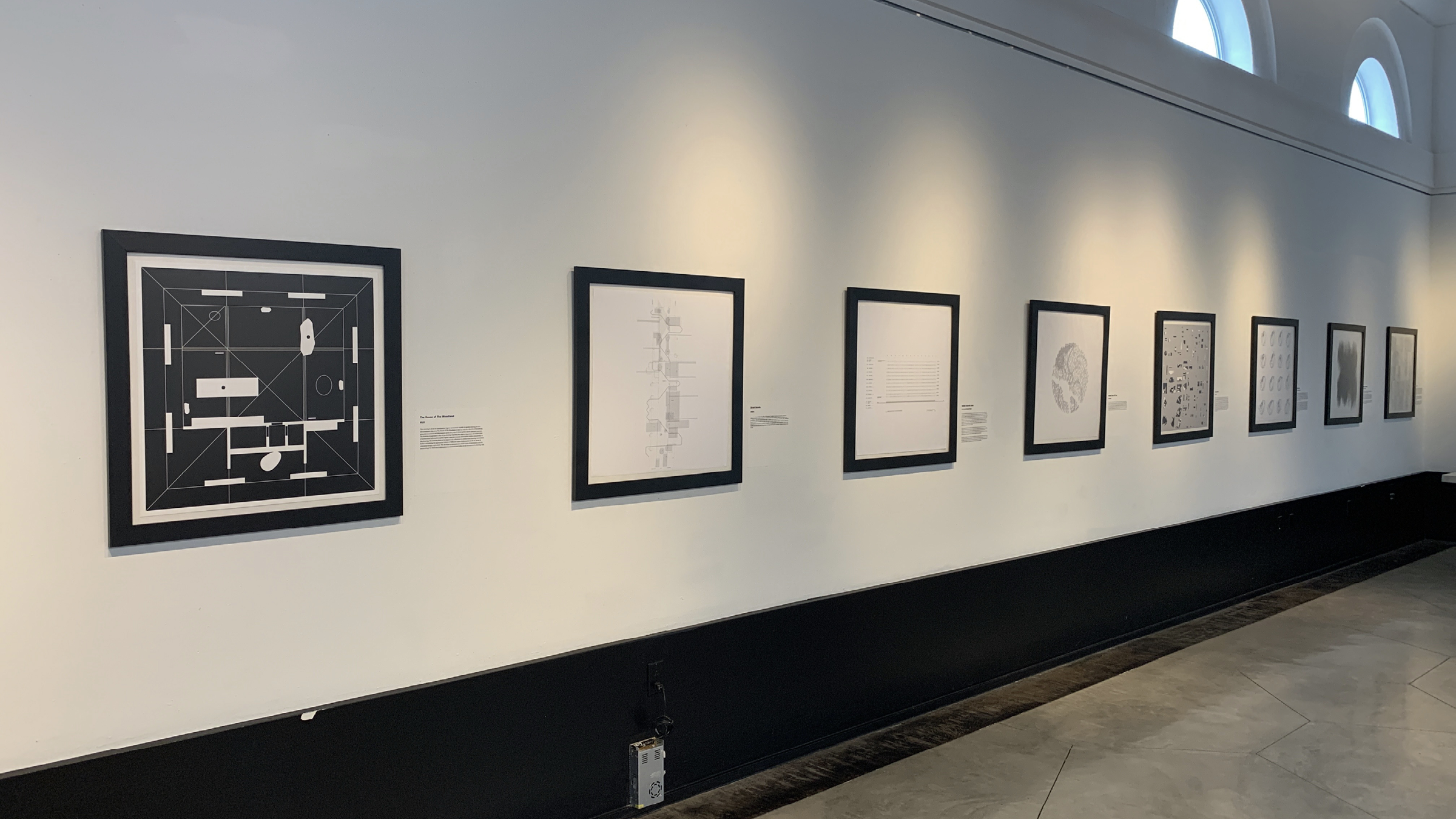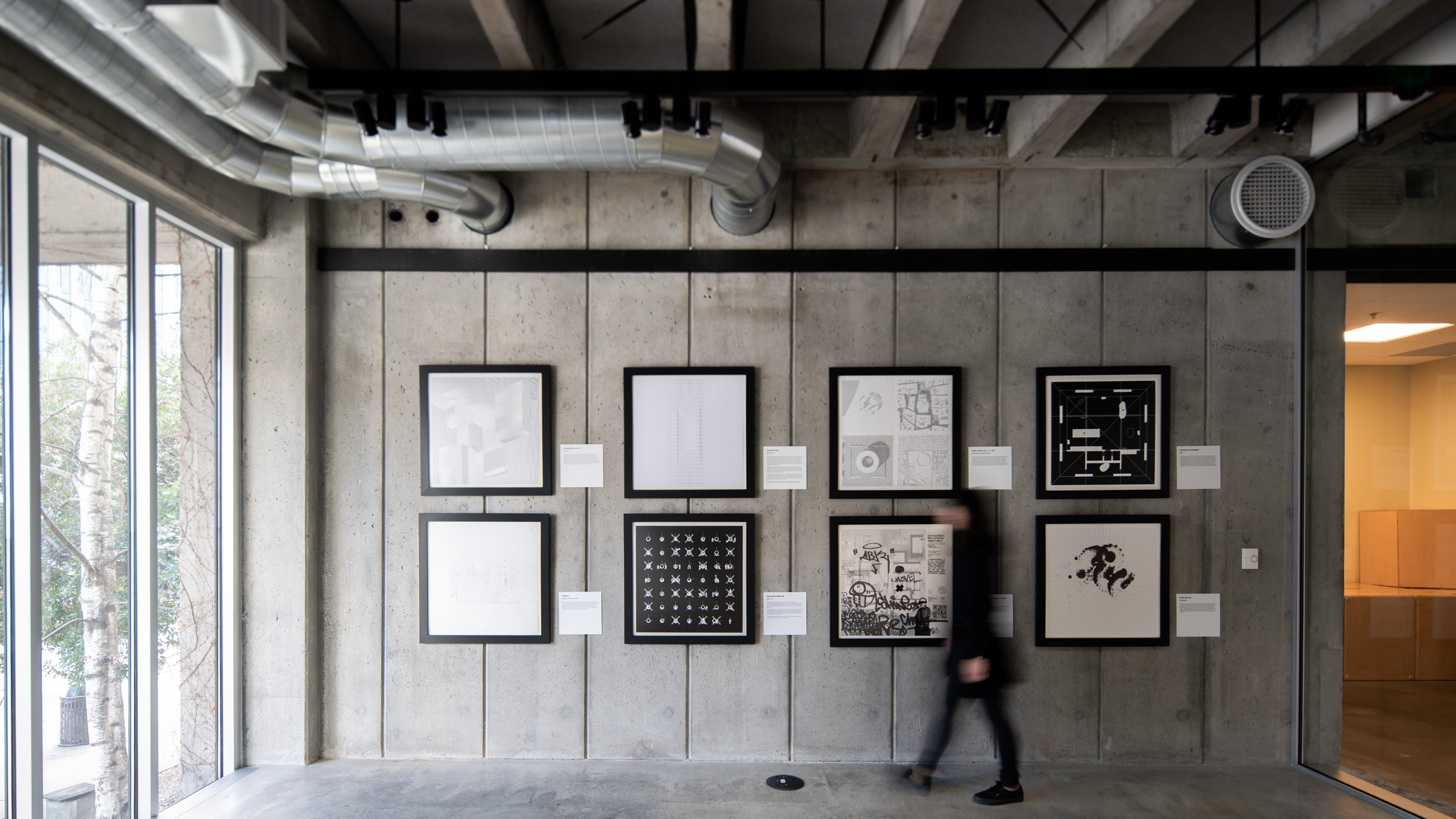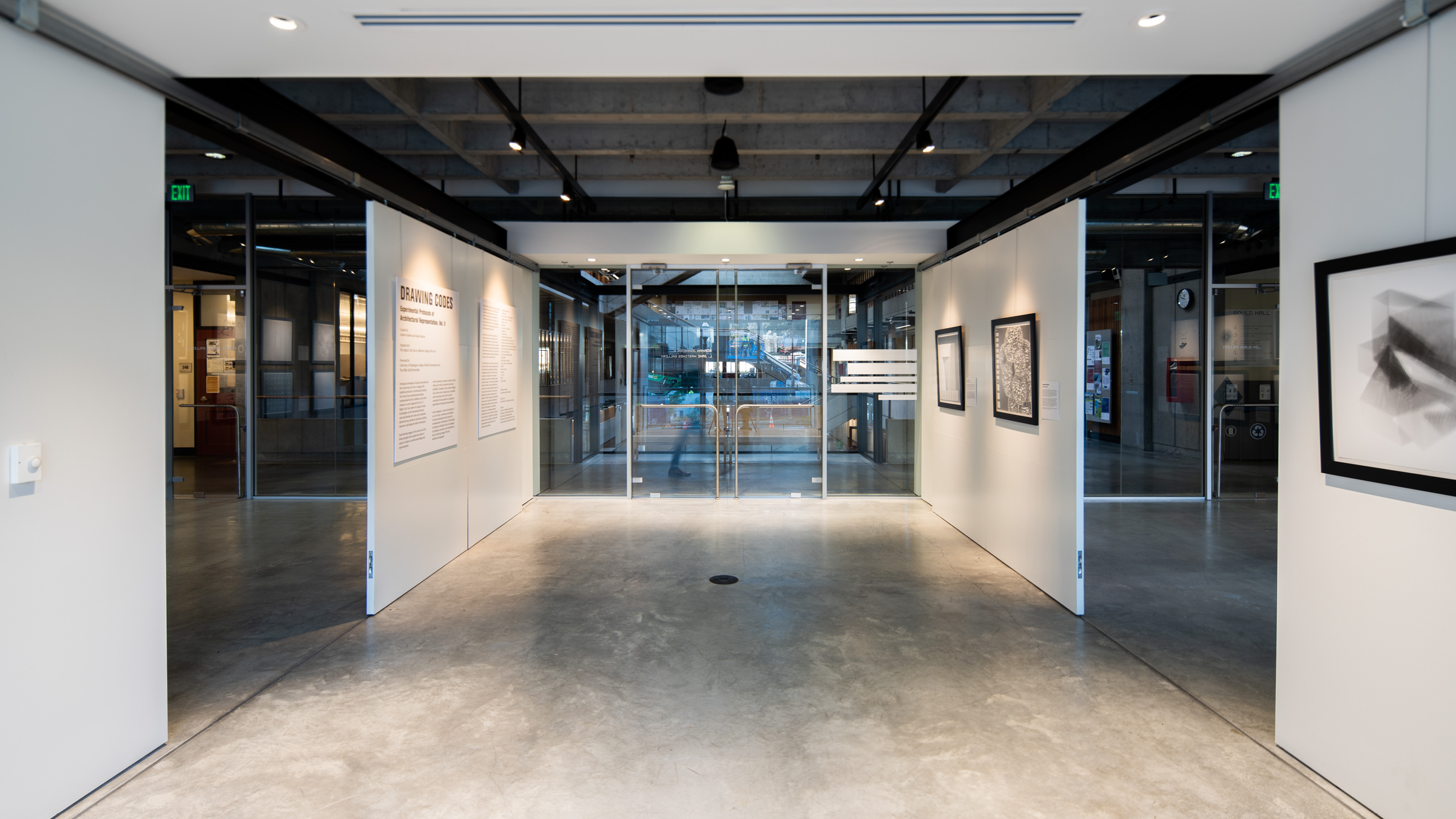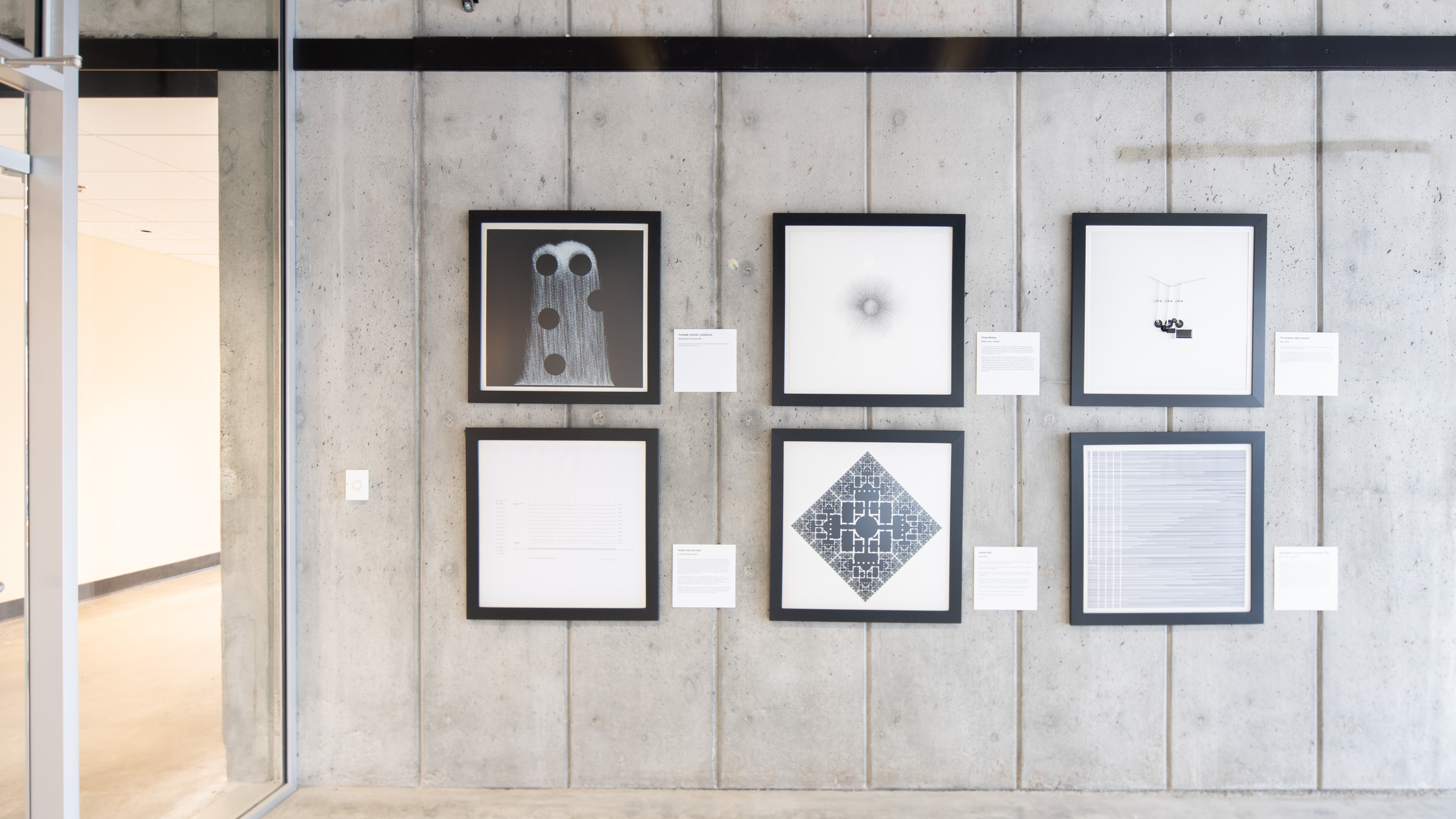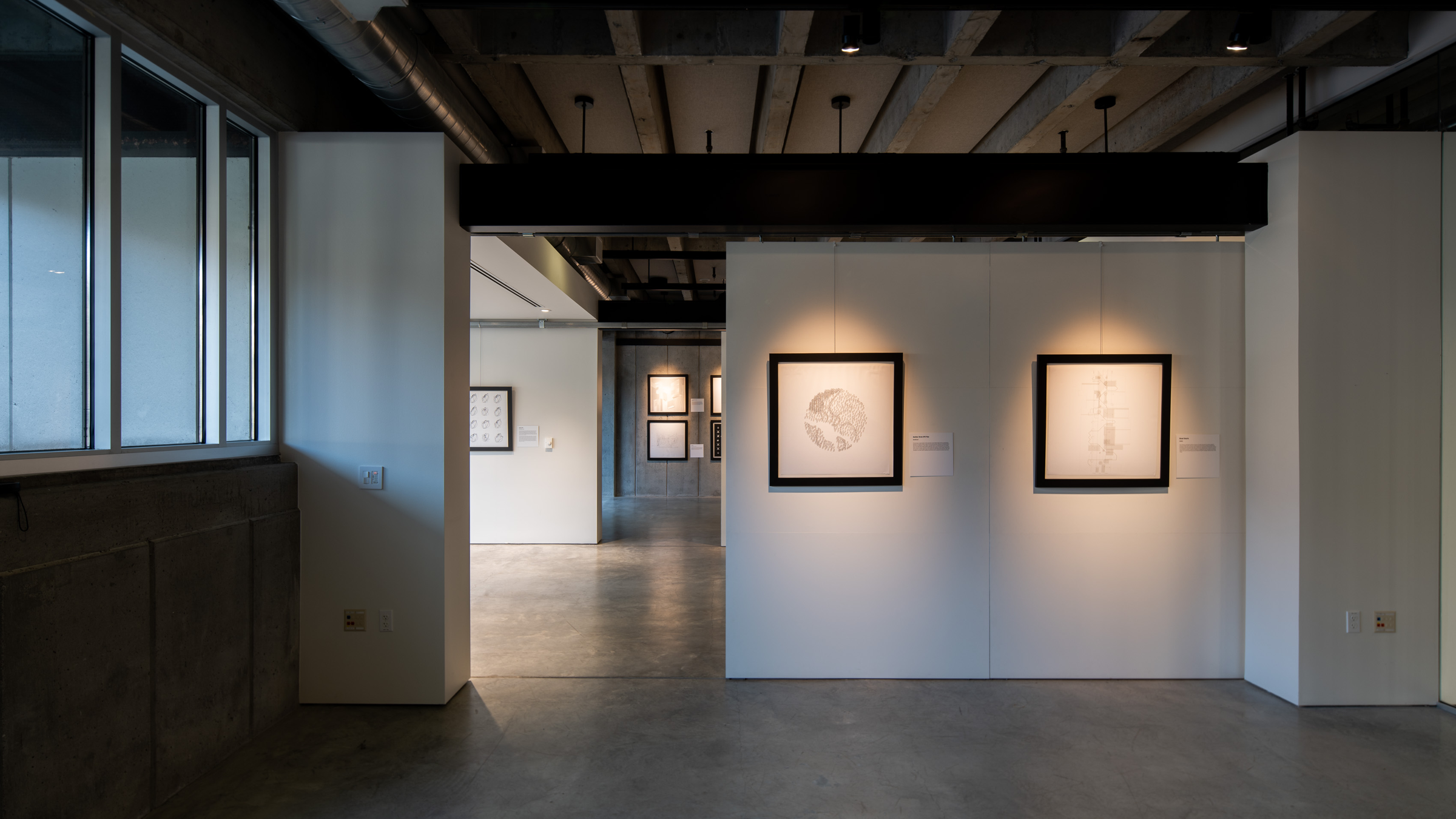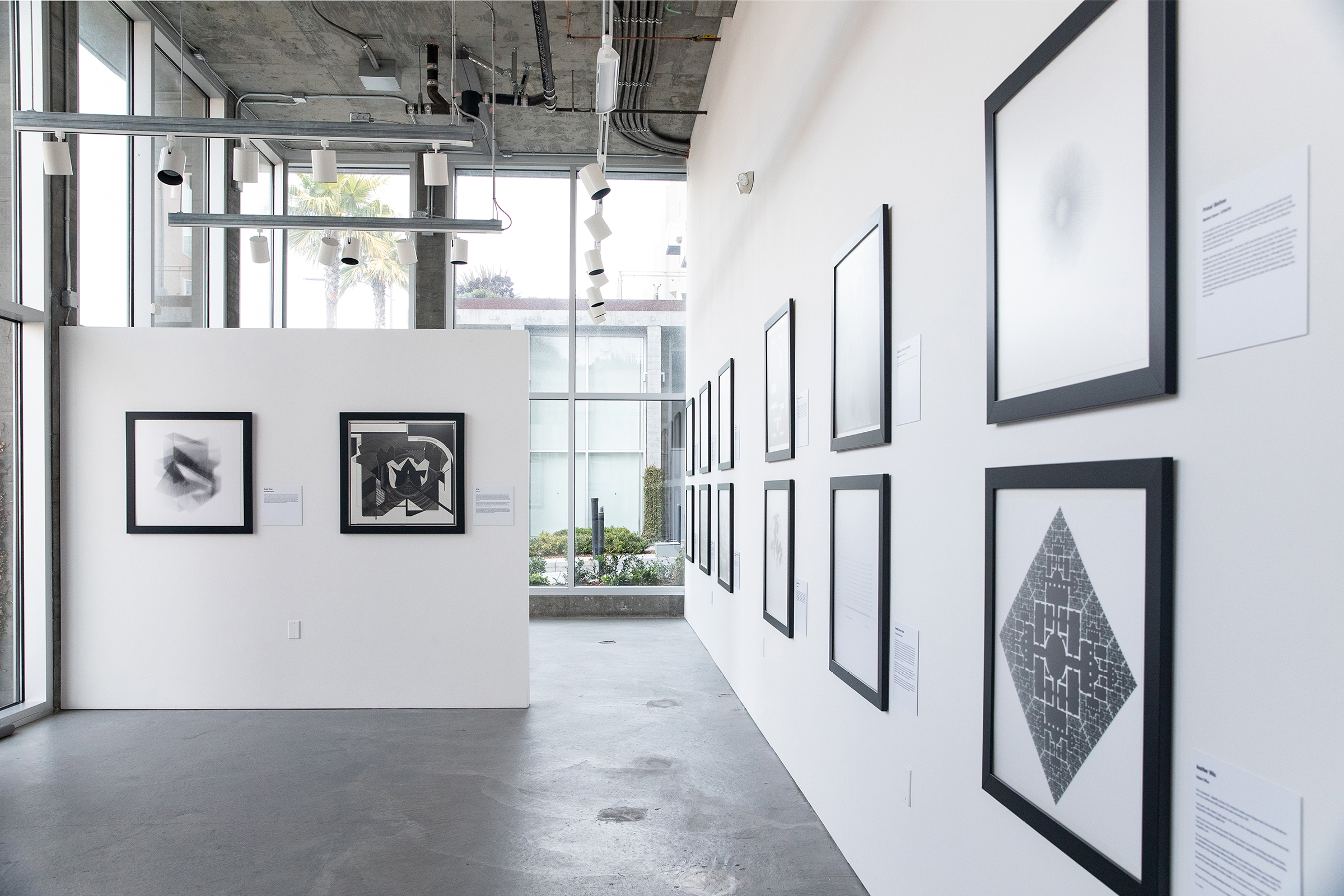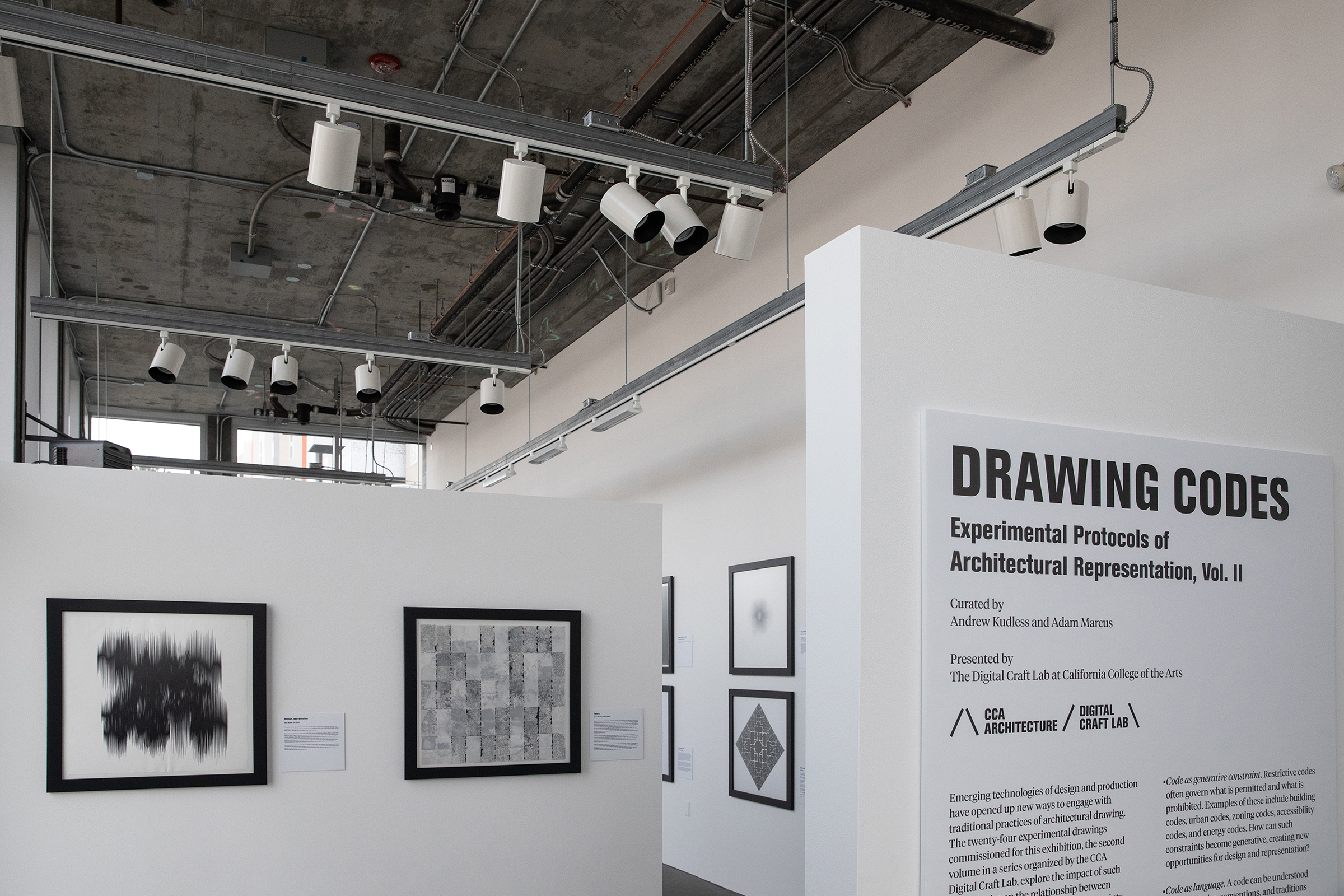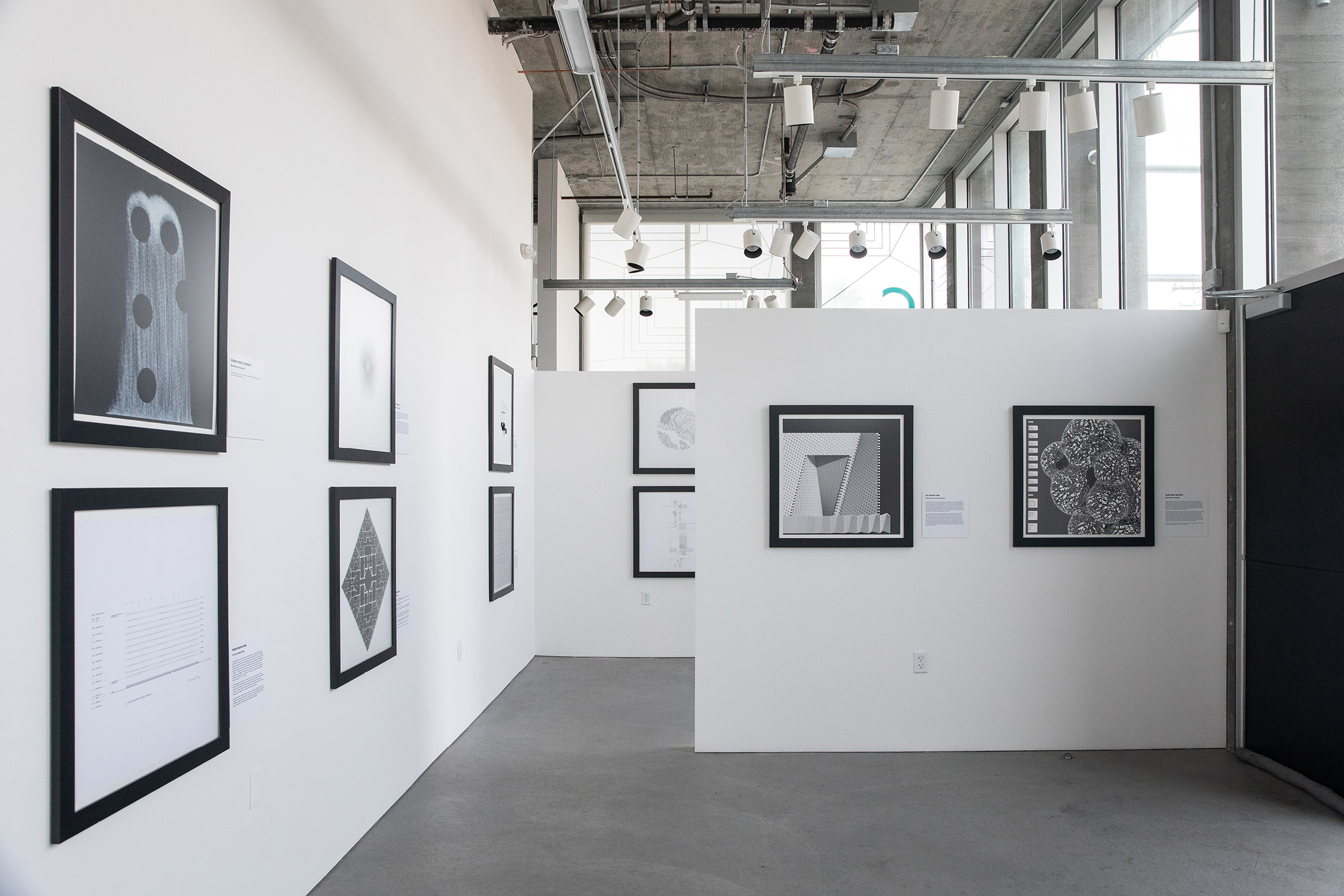Drawing Codes: Experimental Protocols of Architectural Representation
2017-ongoing
Curated by Adam Marcus & Andrew Kudless
Emerging technologies of design and production have opened up new ways to engage with traditional practices of architectural drawing. The 48 drawings commissioned for the two volumes of this exhibition explore the impact of such technologies on the relationship between code and drawing: how rules and constraints inform the ways architects document, analyze, represent, and design the built environment.
Each drawing engages with at least one of the below prompts that begin to expand the notion of code as it relates to architectural design and representation:
Code as generative constraint. Restrictive codes often govern what is permitted and what is prohibited. Examples of this include building codes, urban codes, zoning codes, accessibility codes, and energy codes. How can such constraints become generative, opening up opportunities for design and representation?
Code as language. A code can be understood as a set of rules, conventions, and traditions of syntax and grammar that structure the communication of information. The discipline of architecture similarly has its own language of typologies, taxonomies, and classifications. How can drawing engage with such architectural languages?
Code as cipher. Encoded or encrypted messages are intended to hide or conceal information. Likewise, architectural geometries, forms, spaces, and assemblies are embedded with invisible organizational, social, political, or economic logics that may not be immediately evident. How can drawing engage with these latent meanings and messages?
Code as script. A code can be understood as a script or a recipe: a set of instructions to be executed or performed by a computer, a robot, or (in the case of theater or film), an actor. Scripts often produce unexpected discrepancies between the intent of the code and how it is executed. How can drawing explore these open-ended processes that may not have a defined outcome?
The invited architects were asked to conform to a set of strict rules: consistent dimension, black & white medium, and limiting the drawing to orthographic projection. The intent is for this consistency to emphasize the wide range of approaches to questions of technology, design, and representation. Yet within this considerable diversity of medium, aesthetic sensibility, and content, several common qualities emerge. First is the unsure link between code and outcome: glitches, bugs, accidents, anomalies, but also loopholes, deviations, variances, and departures that open up new potentials for architectural design and representation. Second is a mature embrace of technology not as a fetishized end game, but as an instrument employed synthetically in concert with other architectural “tools of the trade.” And finally, these drawings demonstrate how conventions of architectural representation remain fertile territory for invention and speculation.
Participating architects, Vol. I: Viola Ago, Kelly Bair / Central Standard Office of Design, Kristy Balliet, Curime Batliner, Erin Besler, Amy Campos, Mark Ericson, Thom Faulders / Faulders Studio, Heather Flood / F-lab, Nataly Gattegno & Jason Kelly Johnson / Future Cities Lab, David Gissen, Andrew Heumann, Janette Kim, Joris Komen, Andrew Kovacs, Andrew Kudless / Matsys, Jimenez Lai / Bureau Spectacular, Elena Manferdini, Adam Marcus / Variable Projects, The Open Workshop, Dwayne Oyler & Jenny Wu / Oyler Wu Collaborative, Ron Rael & Virginia San Fratello / Emerging Objects, Clark Thenhaus / Endemic, Michael Young & Kutan Ayata / Young & Ayata
Participating architects, Vol. II: Aranda\Lasch; MARC FORNES / THEVERYMANY; Madeline Gannon / ATONATON; Höweler + Yoon; Ibañez Kim; IwamotoScott Architecture; Stephanie Lin; V. Mitch McEwen; Emma Mendel & Bradley Cantrell; Michael Meredith & Hilary Sample / MOS; MILLIØNS (Zeina Koreitem & John May); modem (Kathryn Moll & Nicholas de Monchaux); NADAAA (Nader Tehrani & Matthew Waxman); Catie Newell / Alibi Studio; Tsz Yan Ng with Mehrdad Hadighi; Outpost Office; Heather Roberge / murmur; Jenny E. Sabin / Jenny Sabin Studio; SPORTS; Studio Sean Canty; John Szot; T+E+A+M; WOJR; Maria Yablonina
See this link for more information on the exhibition.
Volume I:
Hubbell Street Gallery, California College of the Arts, San Francisco CA / January 17 – February 4, 2017
WUHO Gallery, Los Angeles CA / July 8 – August 20, 2017
Knowlton School of Architecture, Ohio State University, Columbus OH / January 10 – February 9, 2018
Taubman College of Architecture & Urban Planning, University of Michigan, Ann Arbor MI / March 7 – March 28, 2018
Volume II:
Houghton Gallery, The Cooper Union Irwin S. Chanin School of Architecture, New York NY / January 22 – February 23, 2019
Elmaleh Gallery, University of Virginia School of Architecture, Charlottesville VA / March 18 – April 19, 2019
Korach Gallery, University of Miami School of Architecture, Miami FL / August 9 – October 19, 2019
Gould Gallery, University of Washington College of Built Environments, Seattle WA / February 3 – March 13, 2020
Hubbell Street Galleries, California College of the Arts, San Francisco CA / September 1 – October 8, 2021

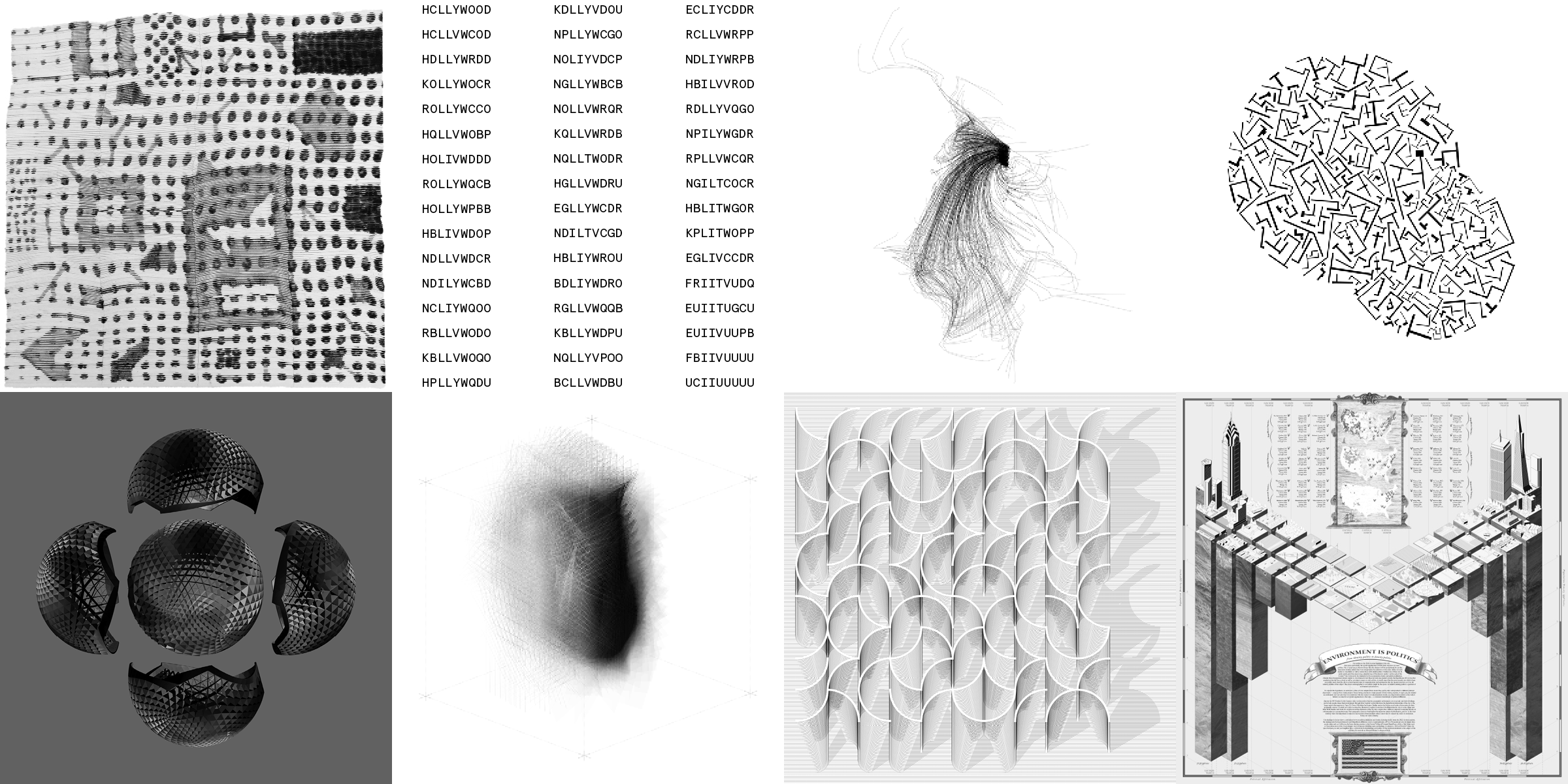
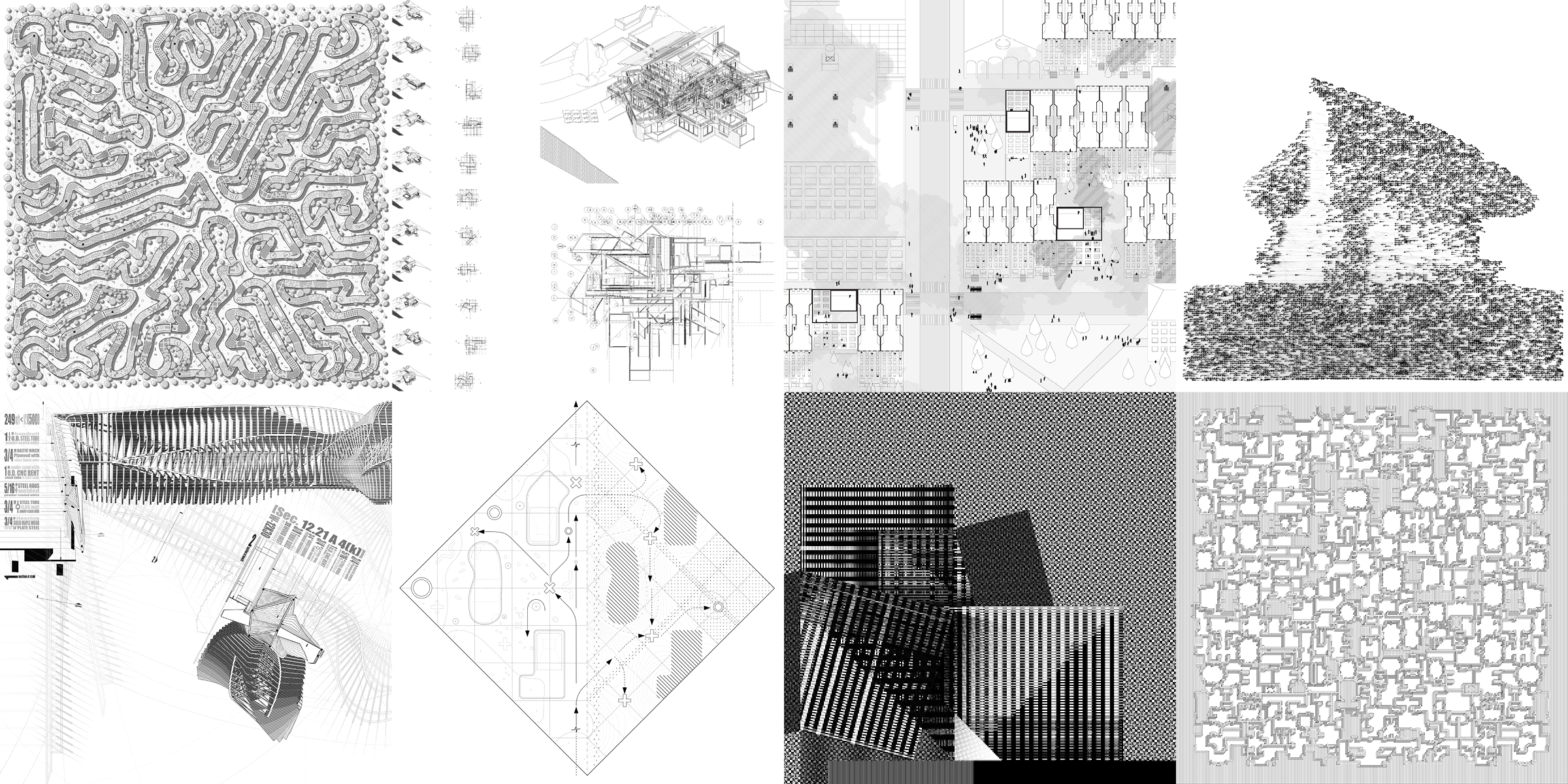
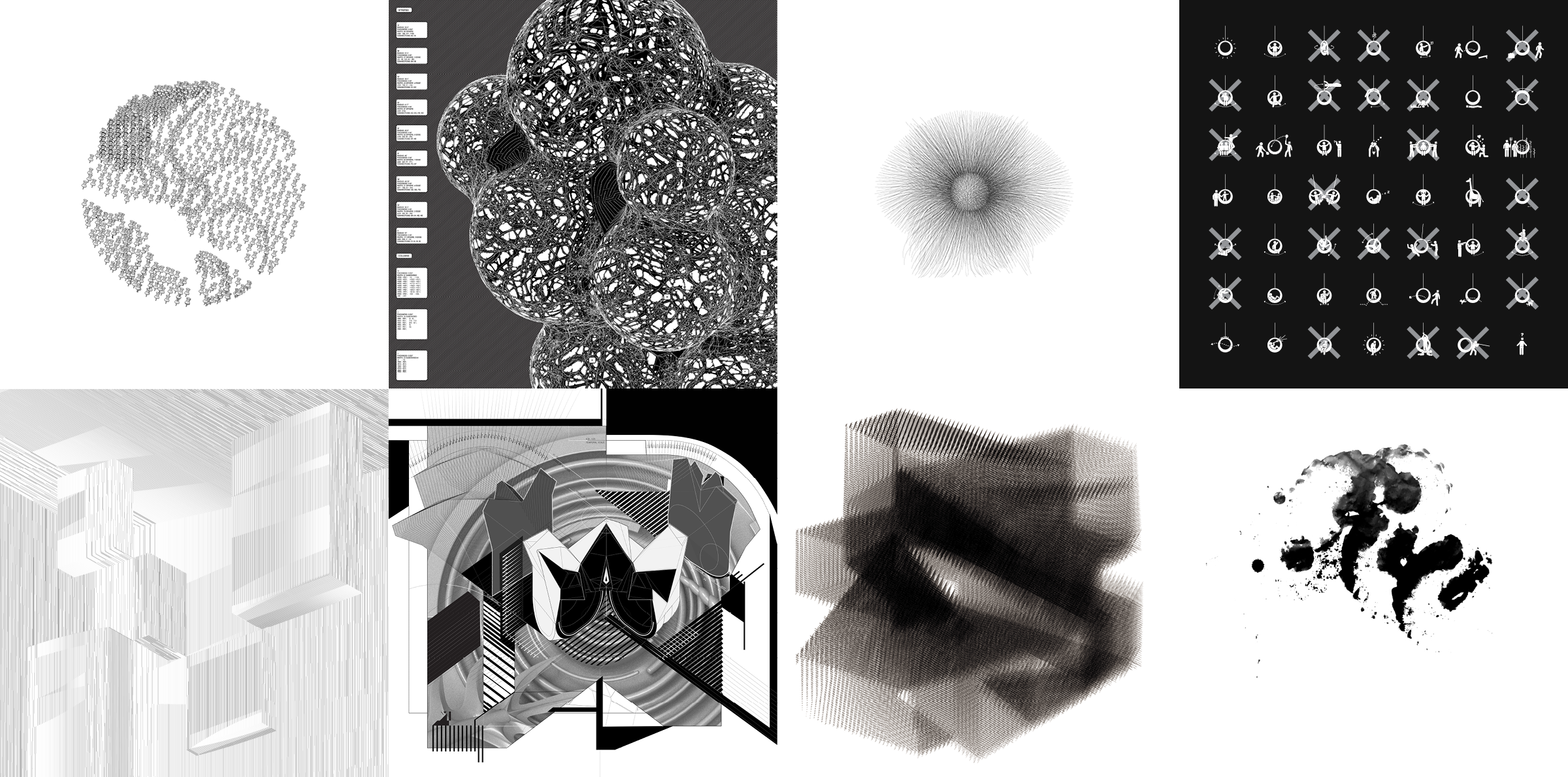

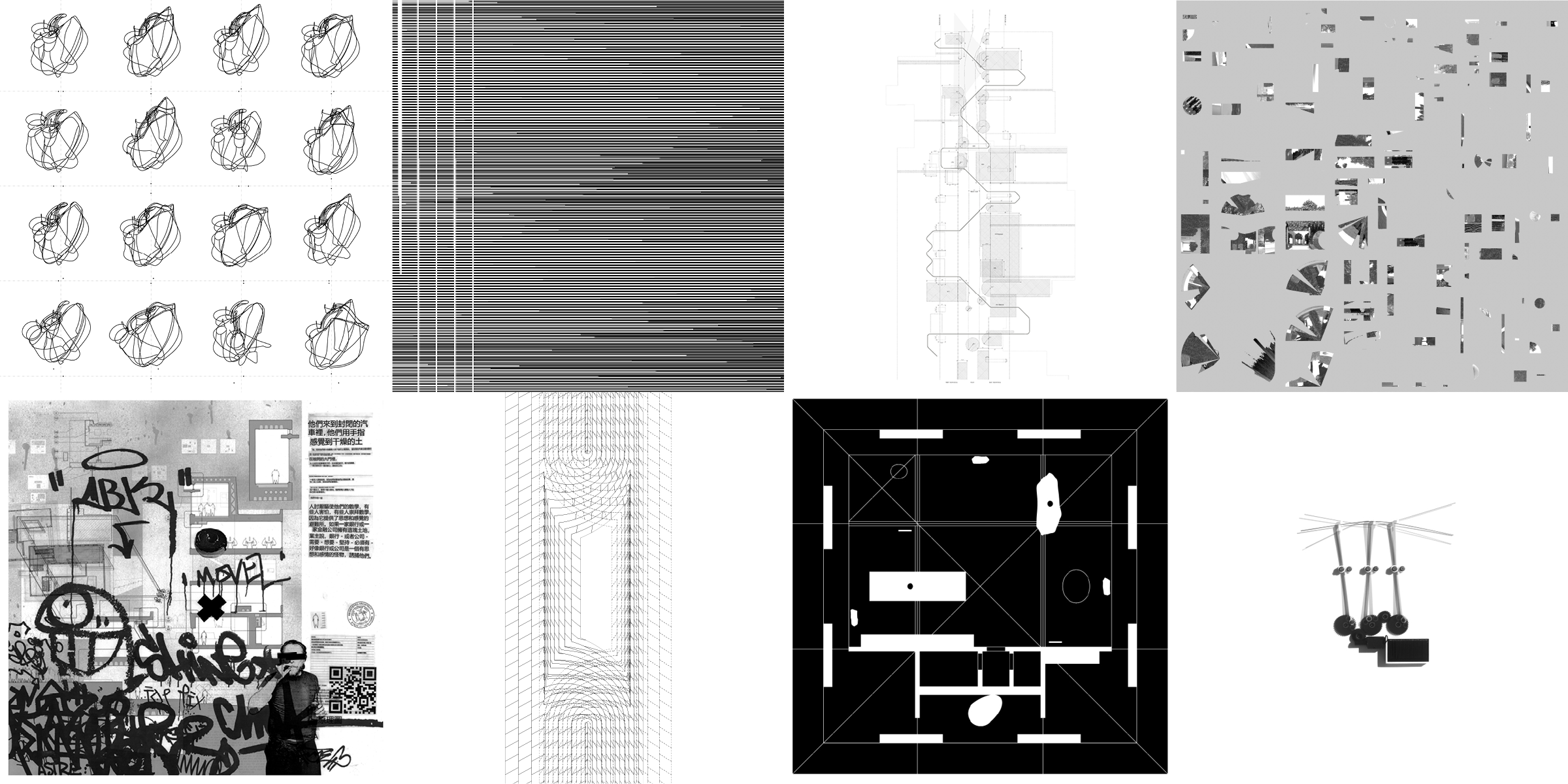
Drawing Codes, Vol. I at CCA Hubbell Street Galleries, San Francisco
January 17 – February 4, 2017
Drawing Codes, Vol. I at WUHO Gallery, Los Angeles
July 8 – August 20, 2017
Photographs of LA opening by Mikey Tnasuttimonkol
Drawing Codes, Vol. I at Banvard Gallery, Knowlton School of Architecture, Ohio State University, Columbus
January 10 – February 9, 2018
Drawing Codes, Vol. I at University of Michigan Taubman College of Architecture and Urban Planning, Ann Arbor
March 6 – March 28, 2018
Drawing Codes, Vol. II at the Arthur A. Houghton, Jr. Gallery at The Cooper Union, New York
January 22 – February 23, 2019
Photographs by Lia Bertucci / The Cooper Union, Irwin S. Chanin School of Architecture
Drawing Codes, Vol. II at the University of Virginia School of Architecture, Charlottesville
March 18 – April 18, 2019
Photographs by Tom Daly and UVA School of Architecture
Drawing Codes, Vol. II at the Korach Gallery, University of Miami School of Architecture
August 9 – October 19, 2019
Drawing Codes, Vol. II at the Gould Gallery, University of Washington College of Built Environments, Seattle
February 3 – March 13, 2020
Photographs by Vlanka Catalan
Drawing Codes, Vol. II at CCA Hubbell Street Galleries, San Francisco
September 1 – October 8, 2021
Photographs by Nicholas Bruno
Project Credits:
Curators: Adam Marcus & Andrew Kudless
Exhibition Assistants: Gina Bugiada, Lina Kudinar, Marc Northstar
Acknowledgements: Jaime Austin, Stephen Beal, Jason Kelly Johnson, Jonathan Massey, Karina O’Neill, Amanda Schwerin, Dustin Smith, Justin Smith, Lisa Findley, Keith Krumwiede, Laura Ng, Ingalill Wahlroos-Ritter, Sandhya Kochar, Mary Ann Wilkinson, Sharon Haar, Nader Tehrani, Steven Hillyer, Ila Berman, Sneha Patel, Melissa Goldman, Rodolphe el-Khoury, Shawna Meyer, The Miller Hull Partnership, Renee Cheng, Joshua Polansky, Robert Hutchinson, Vlanka Catalan, Sarah Chan, Bryndis Hafthorsdottir, Manuel Angeja


